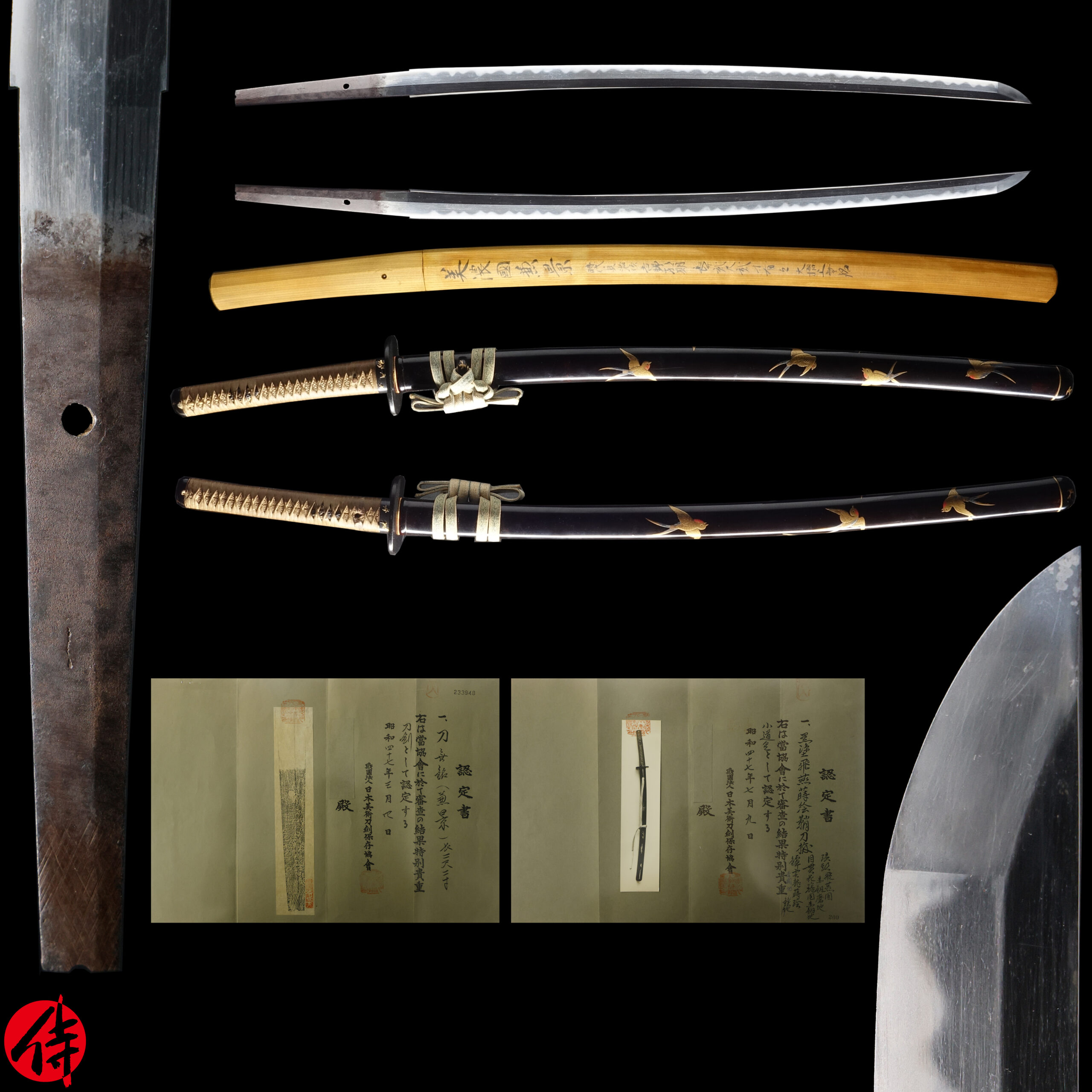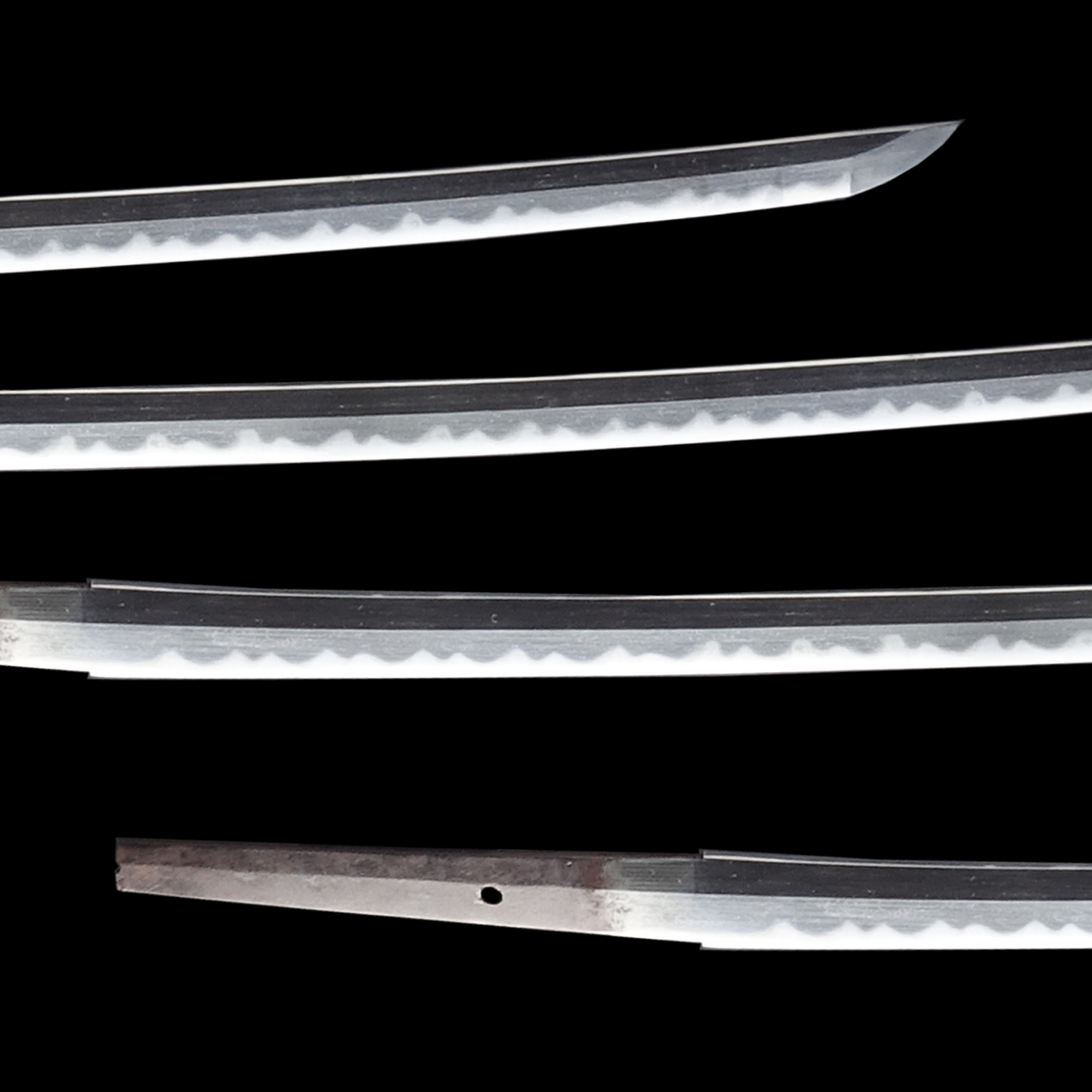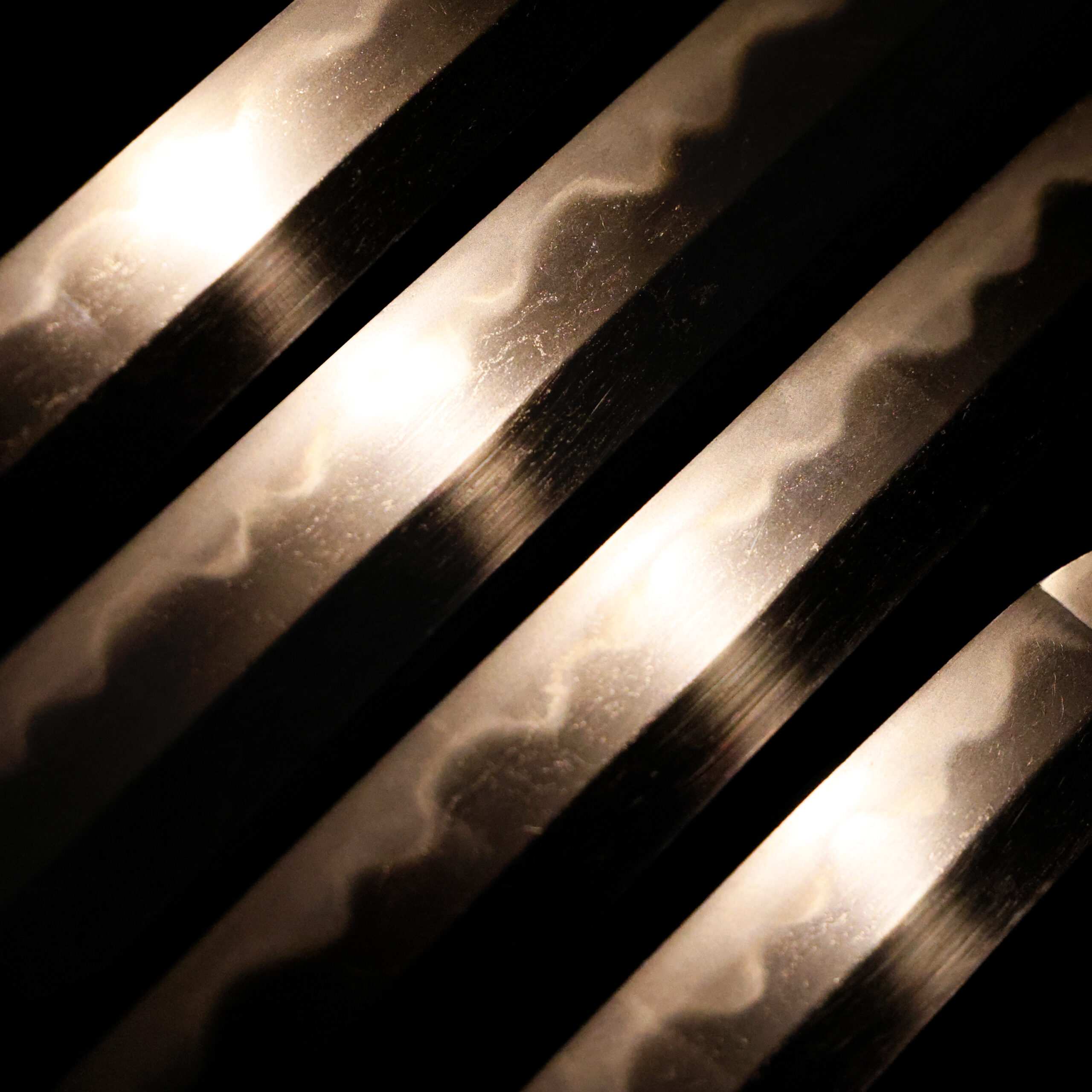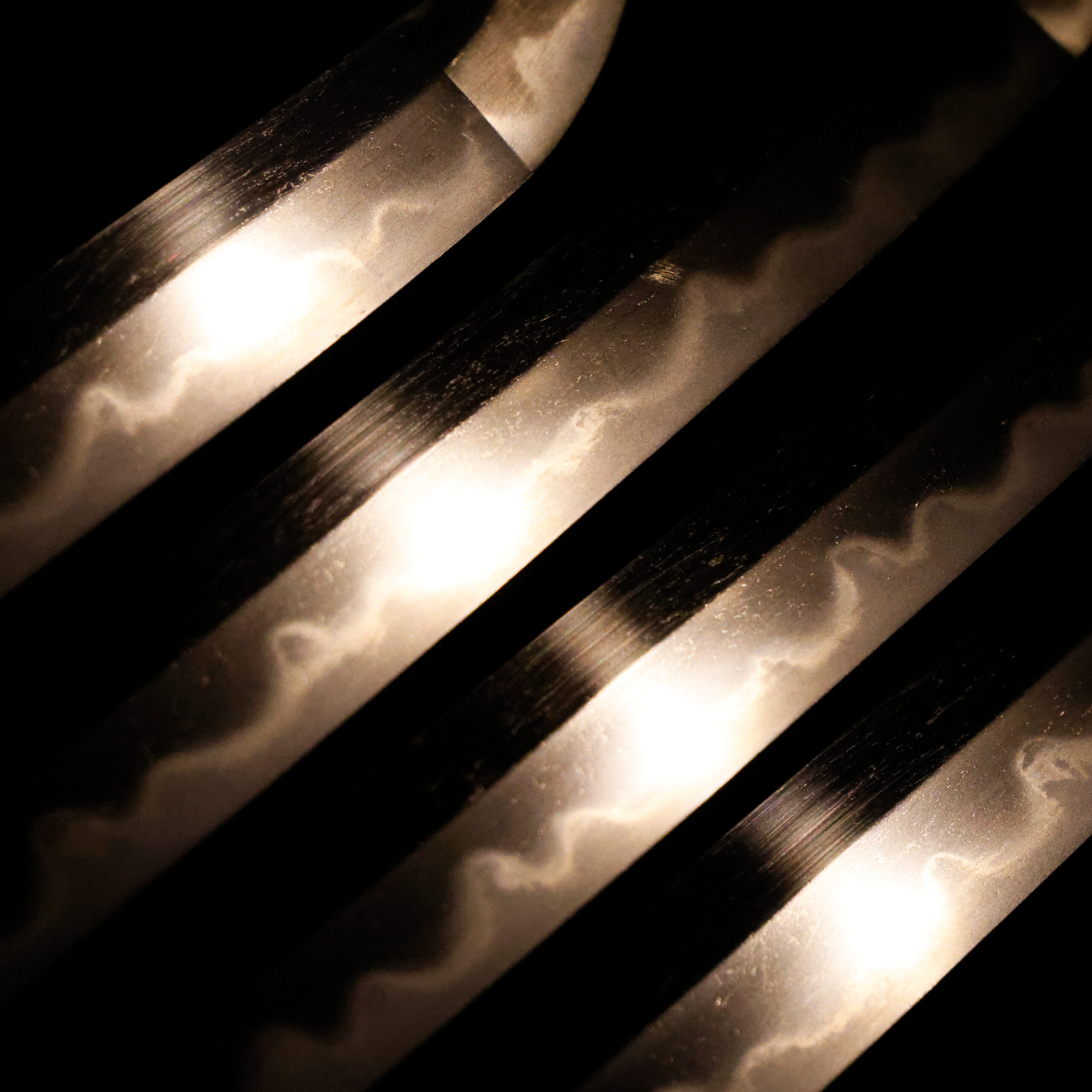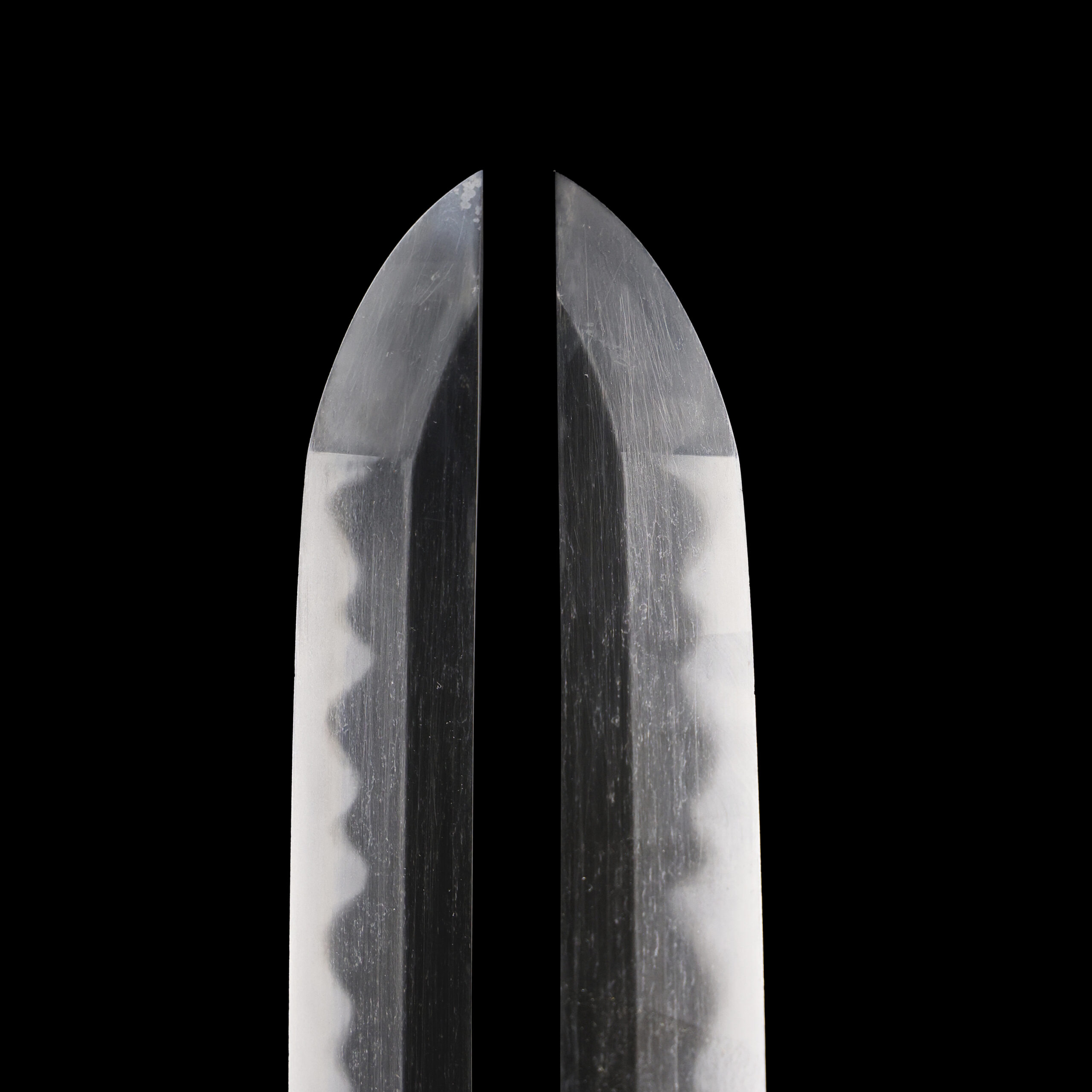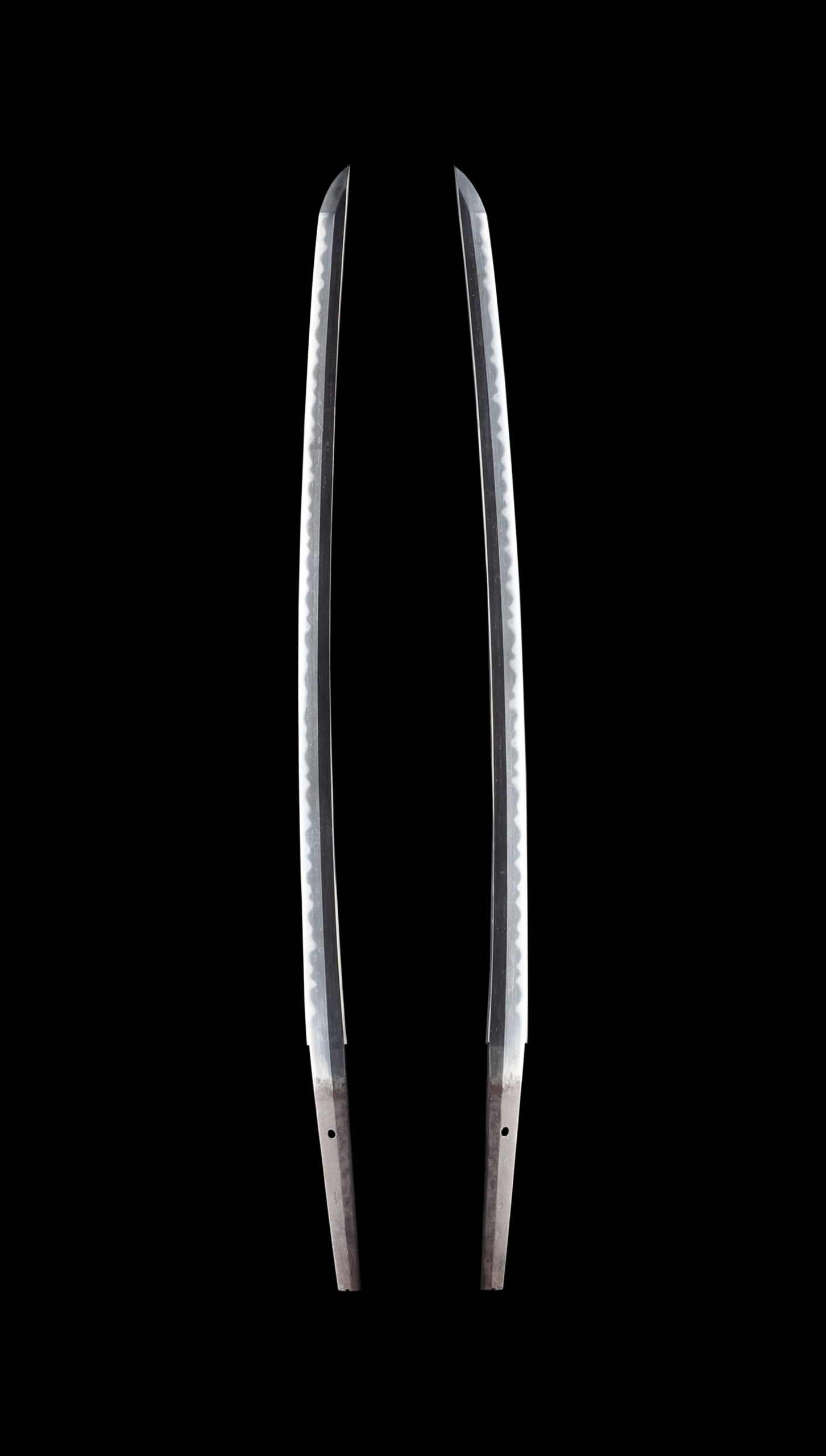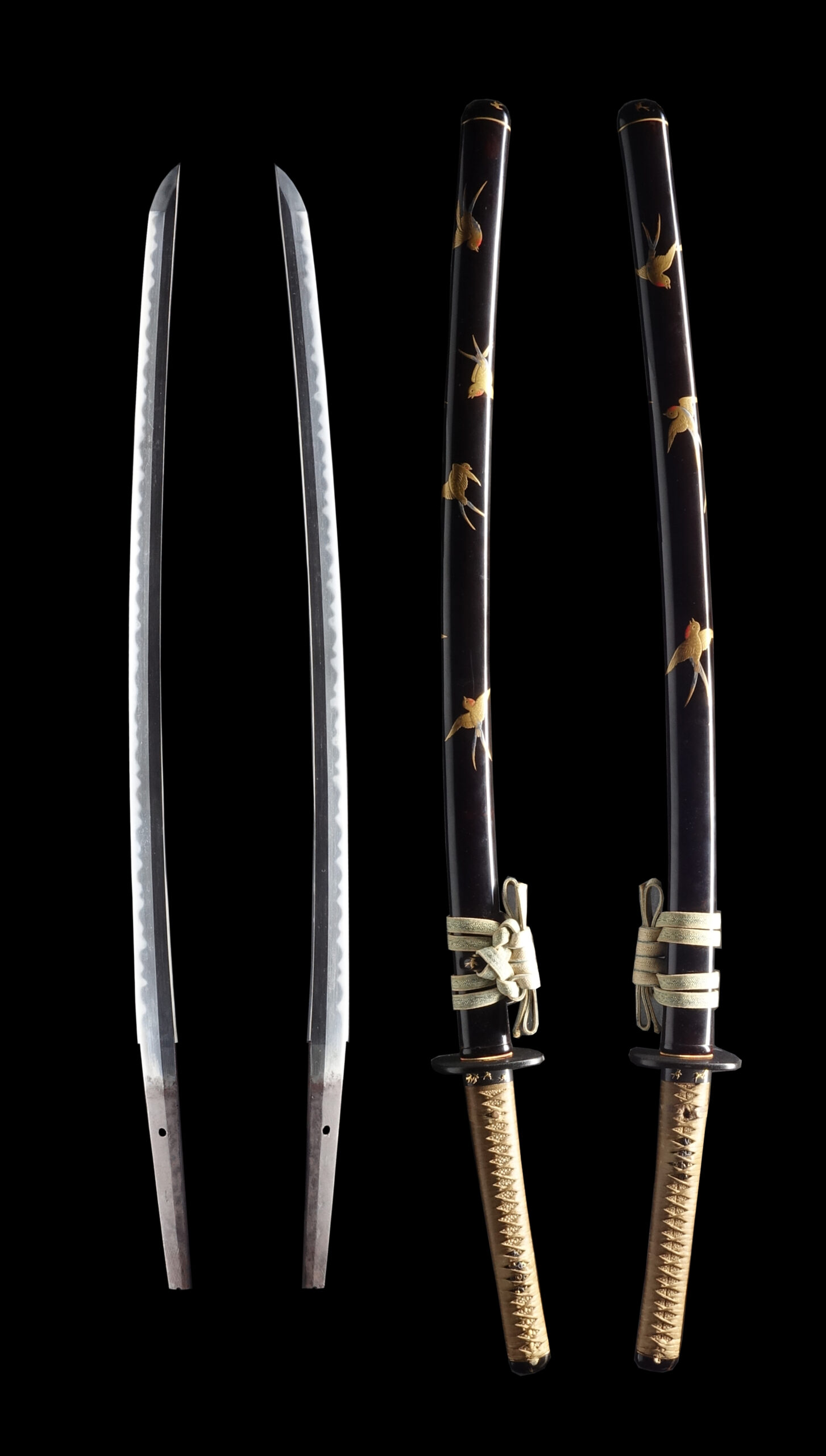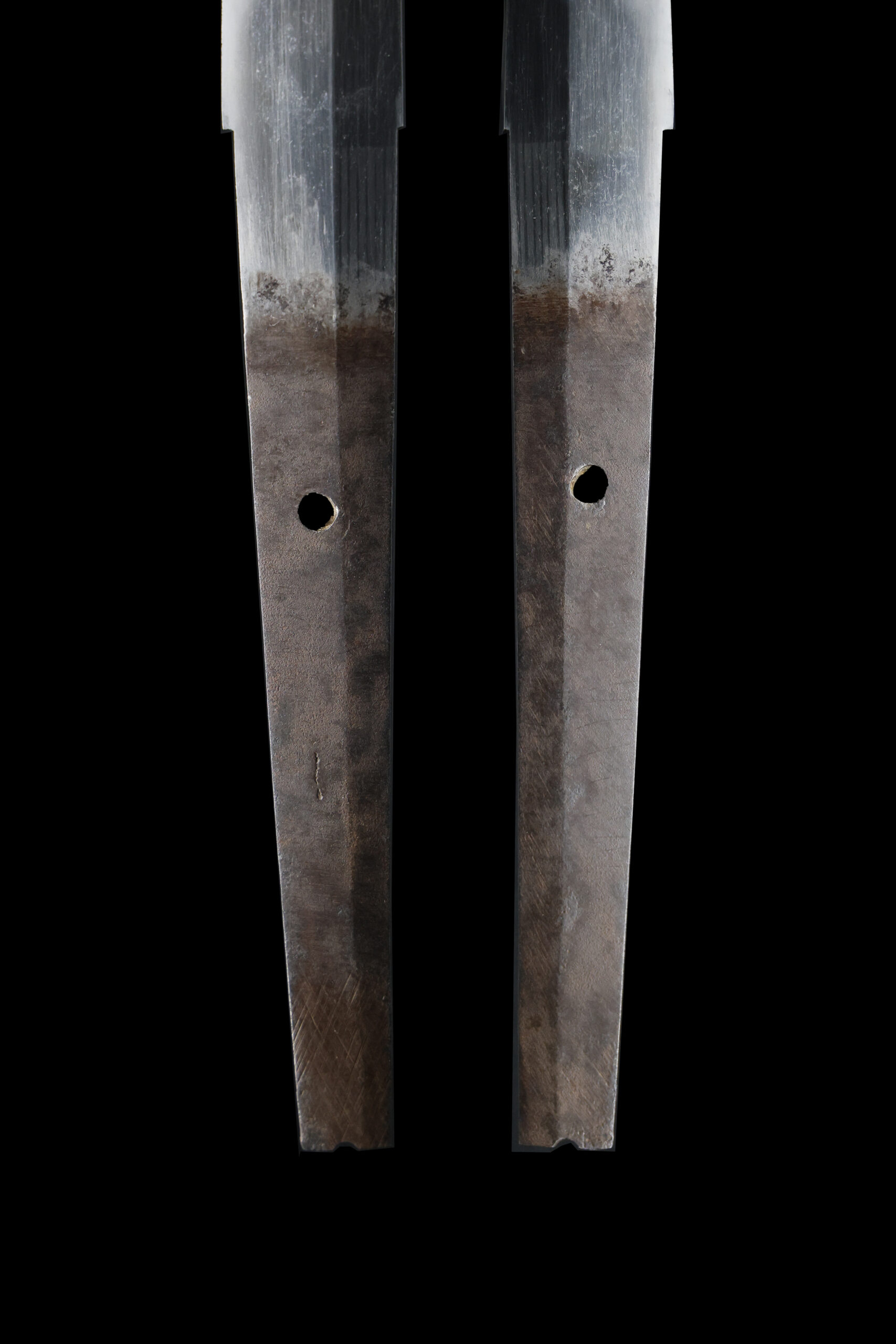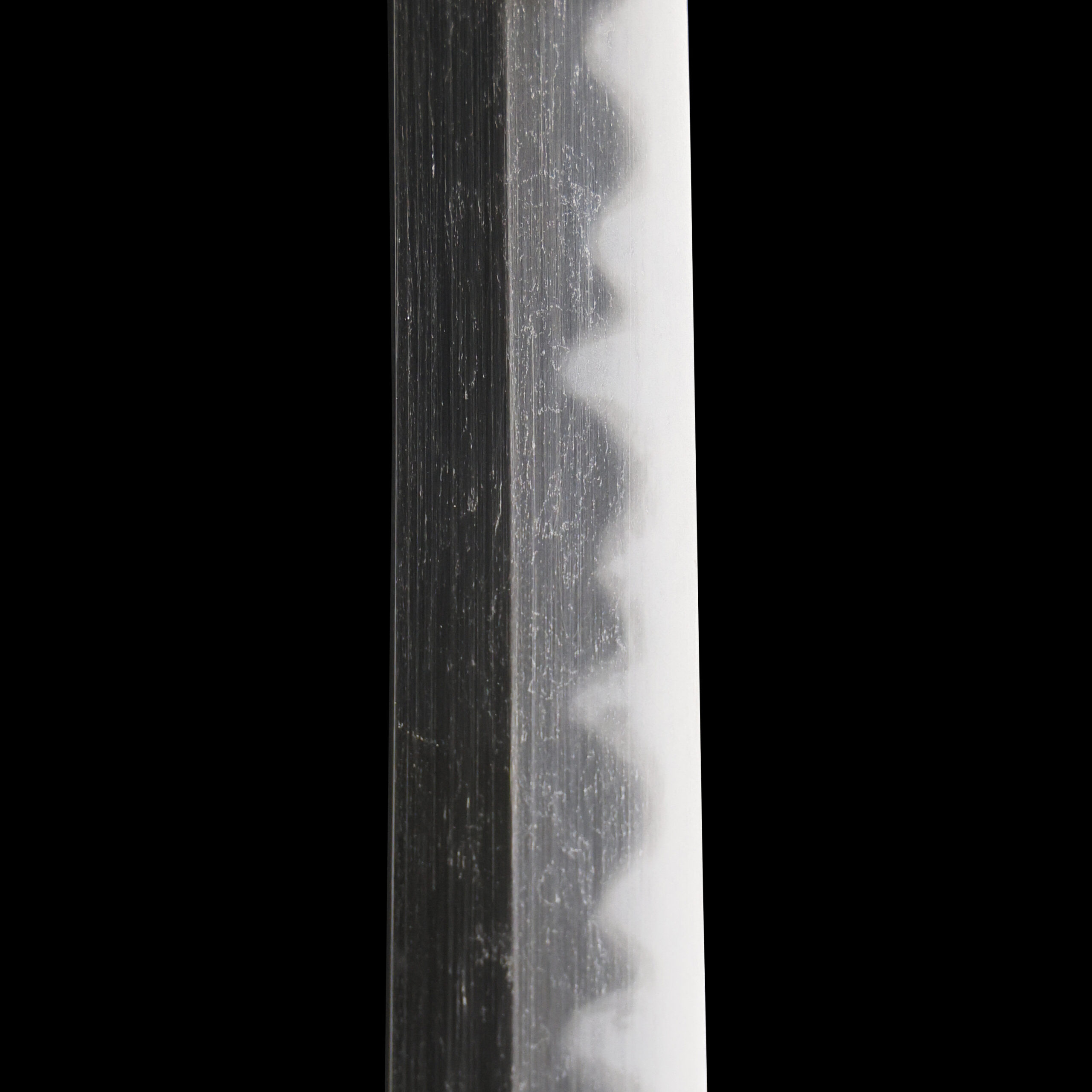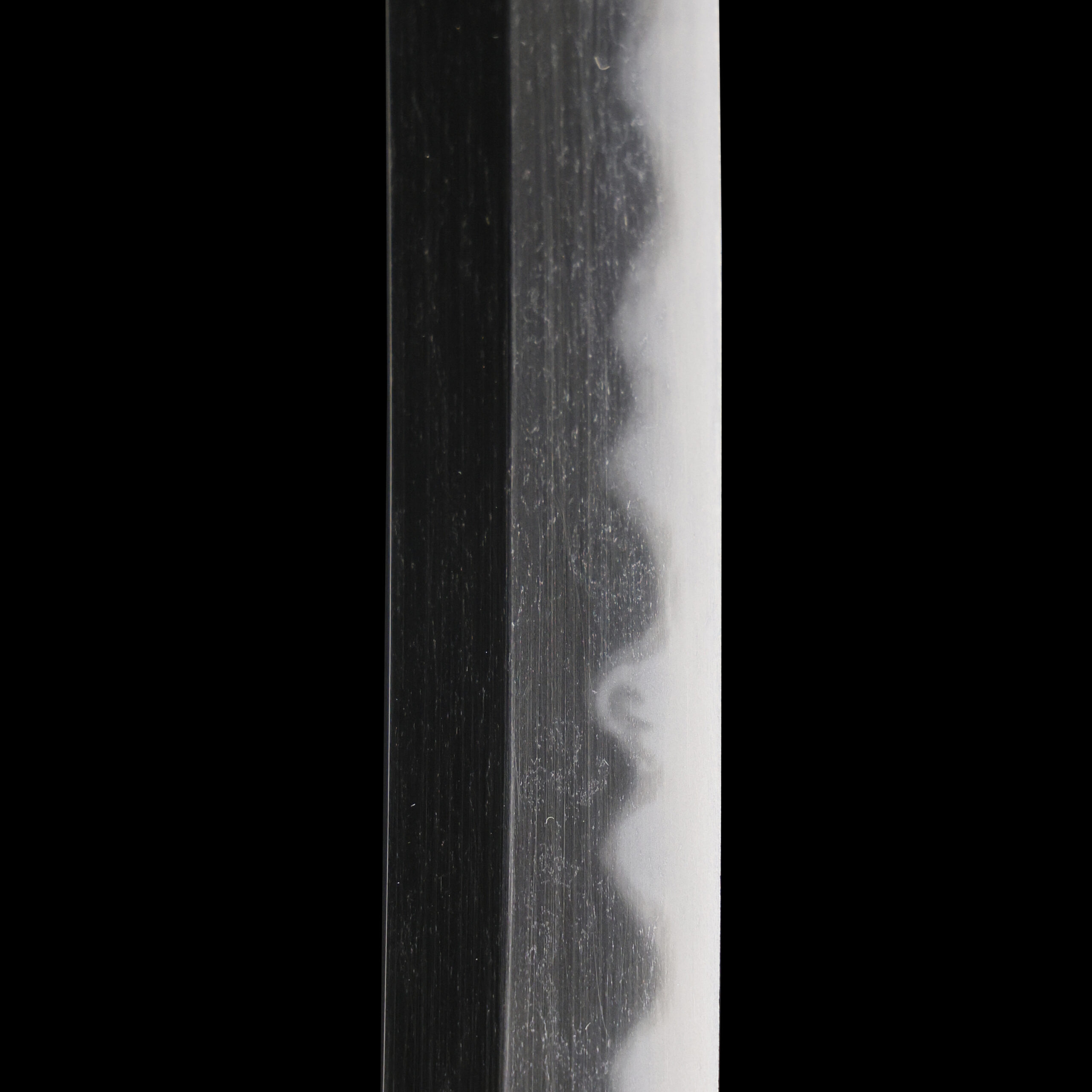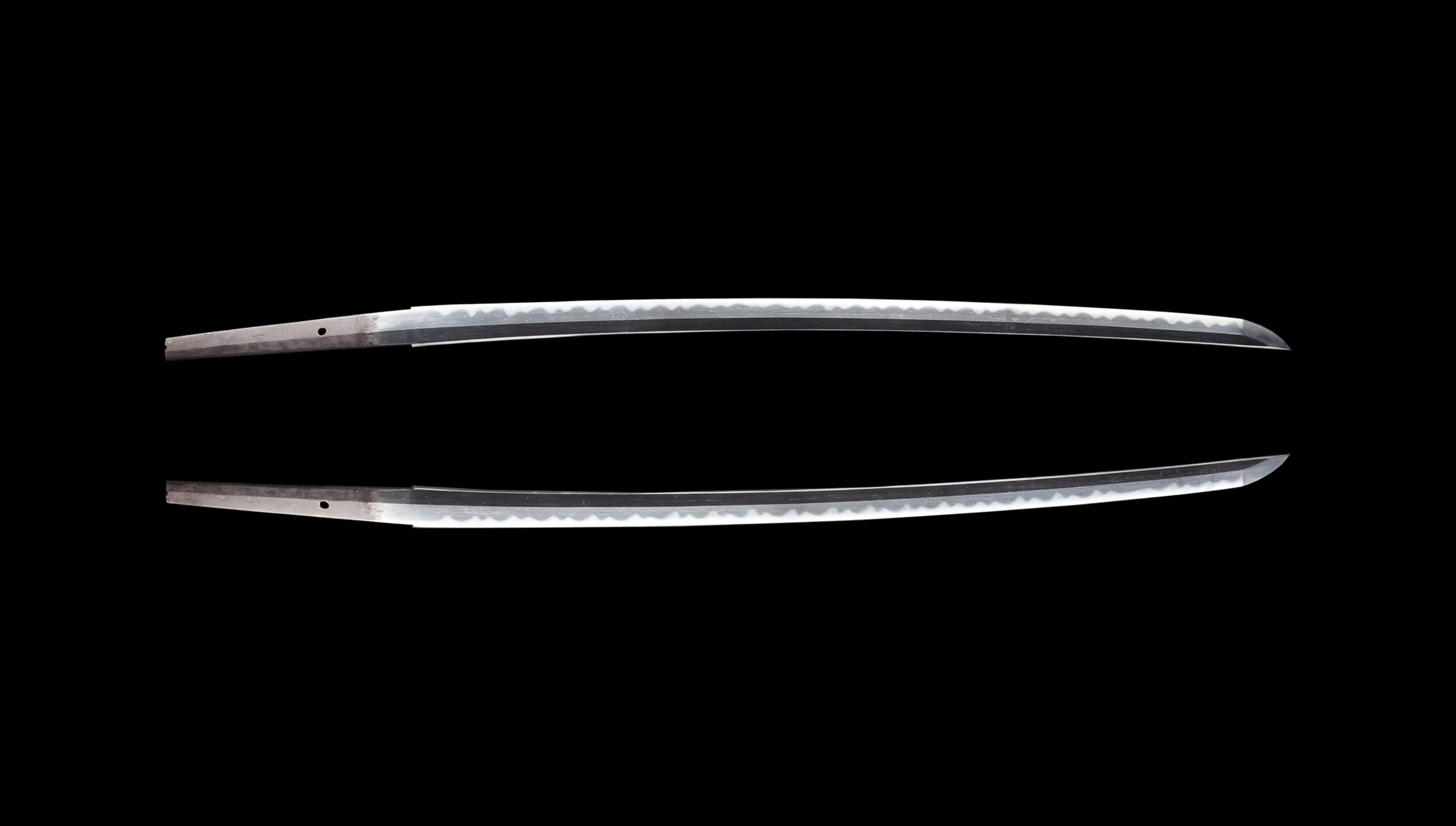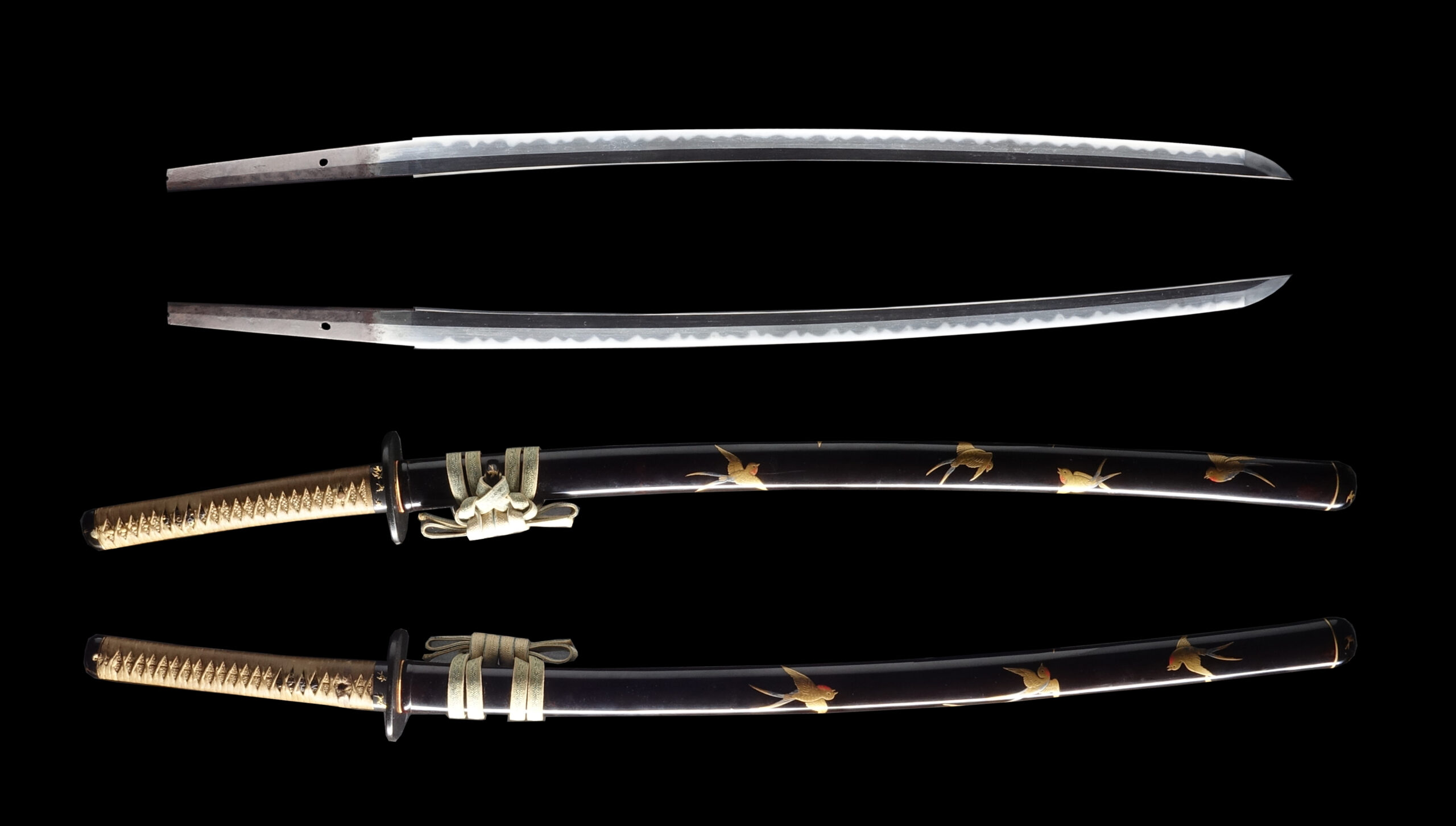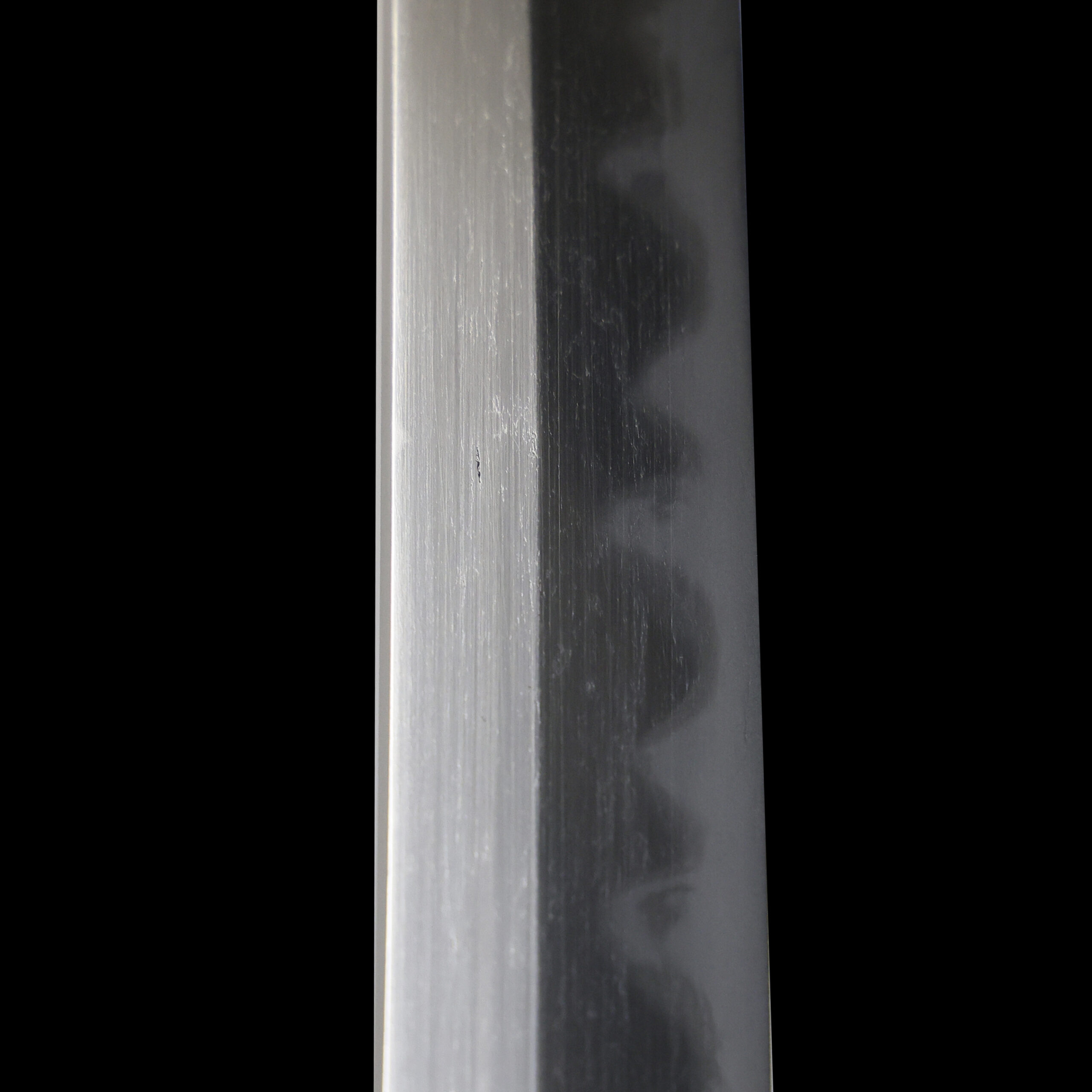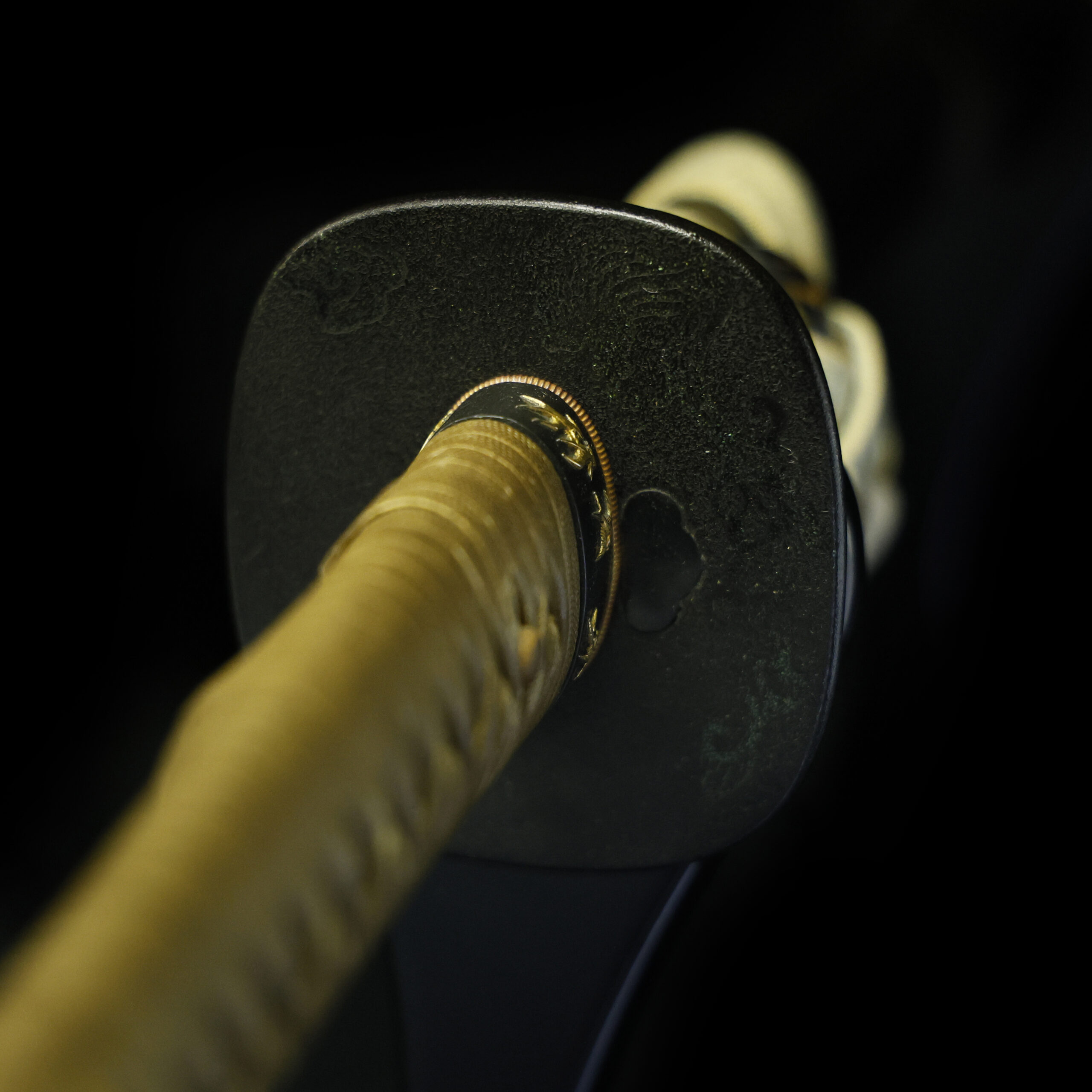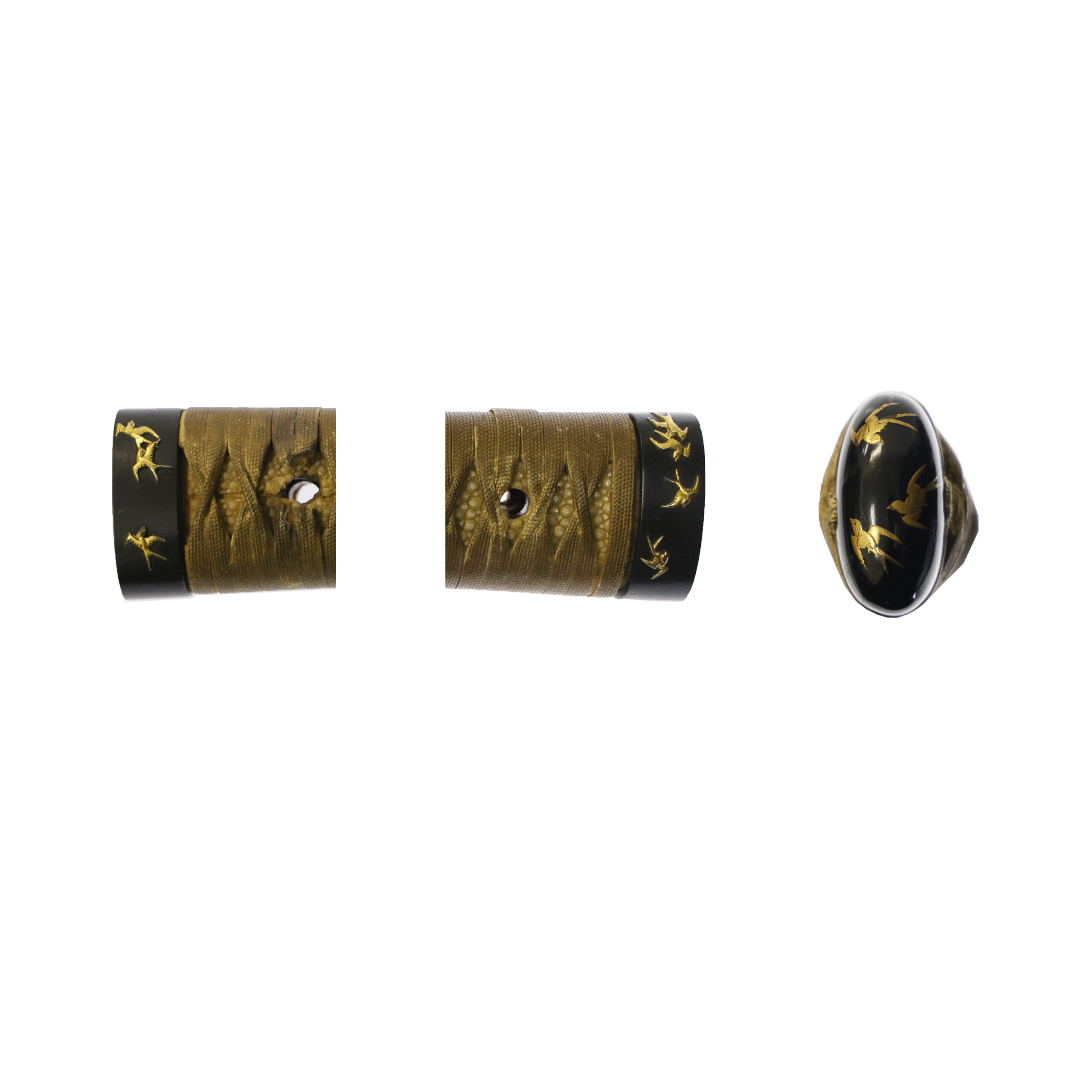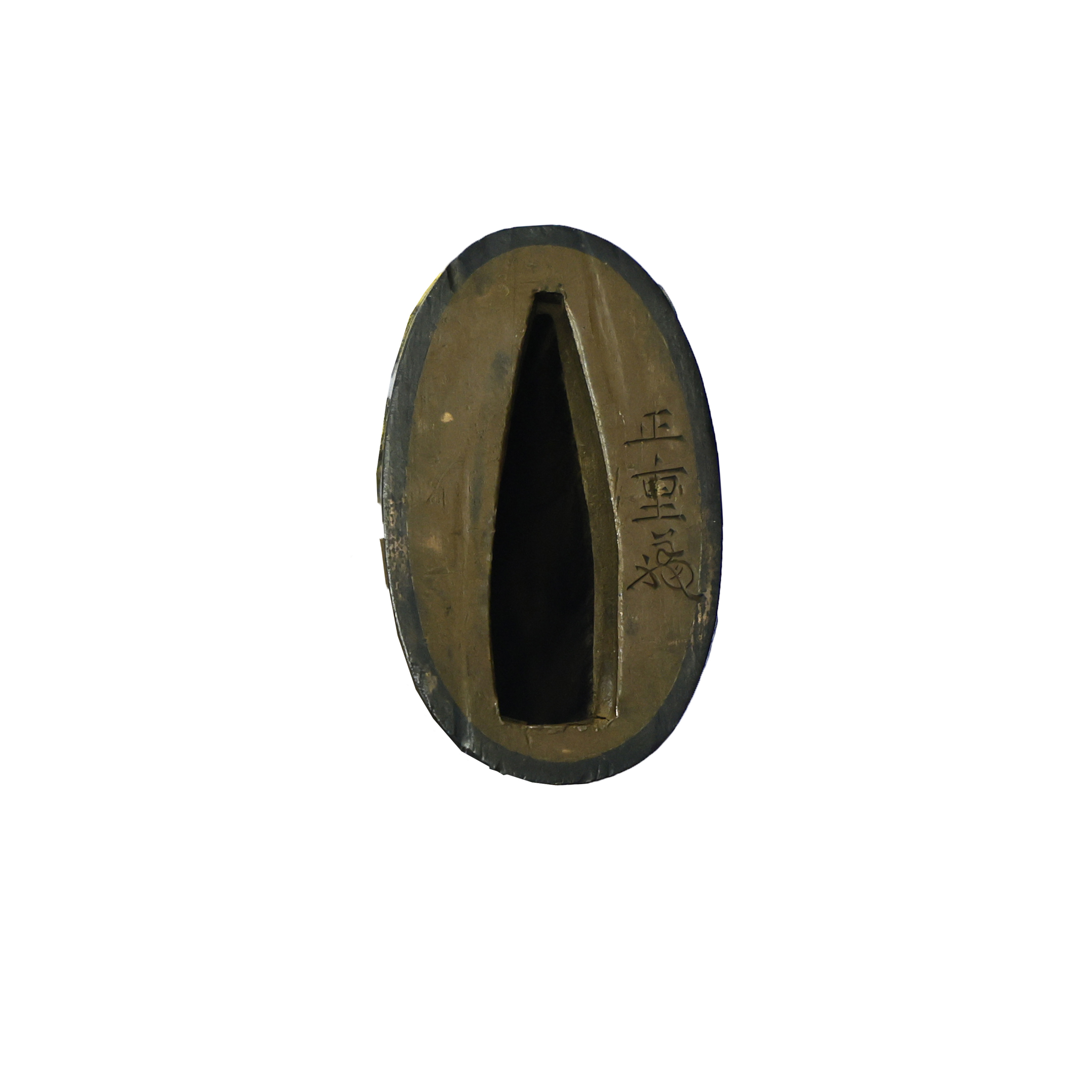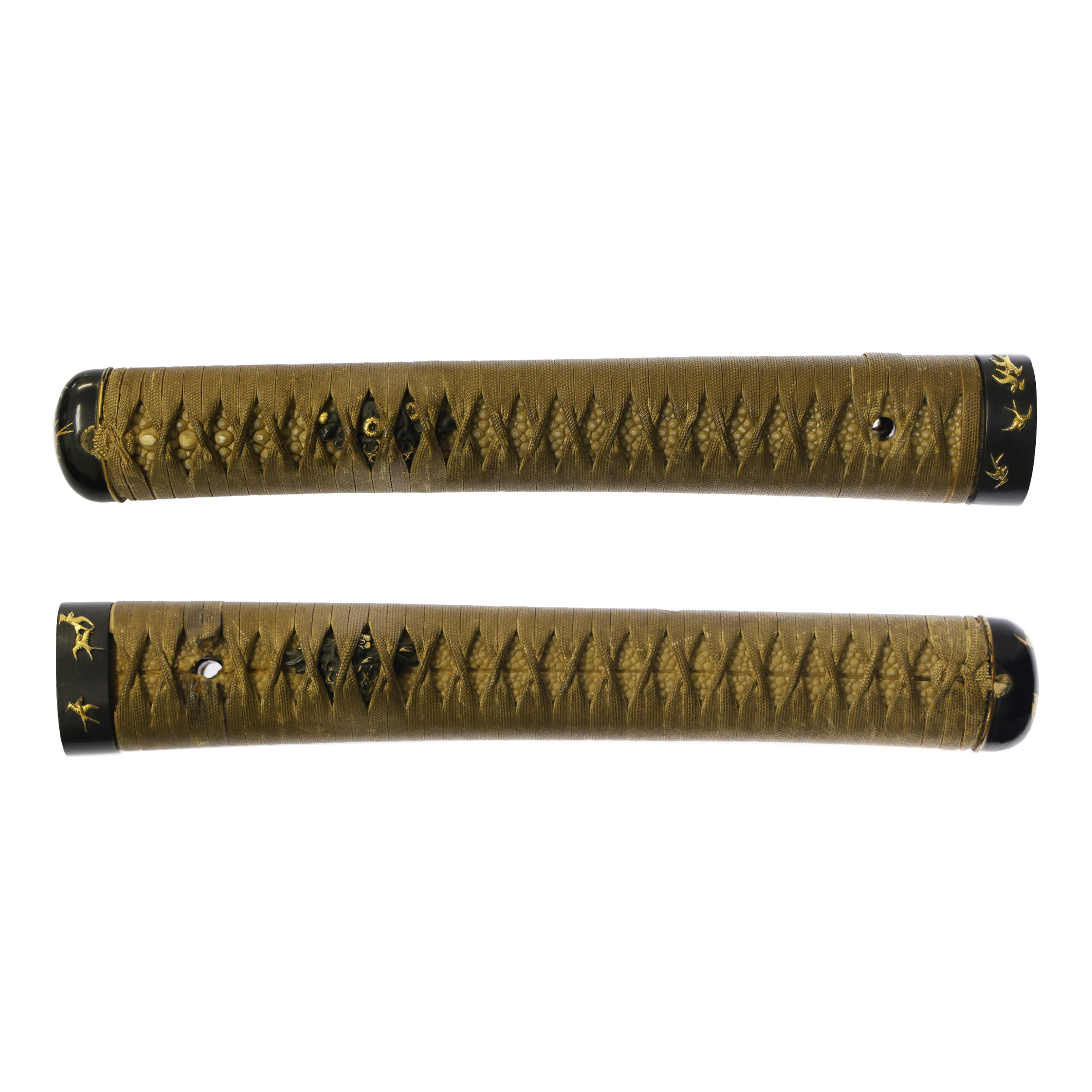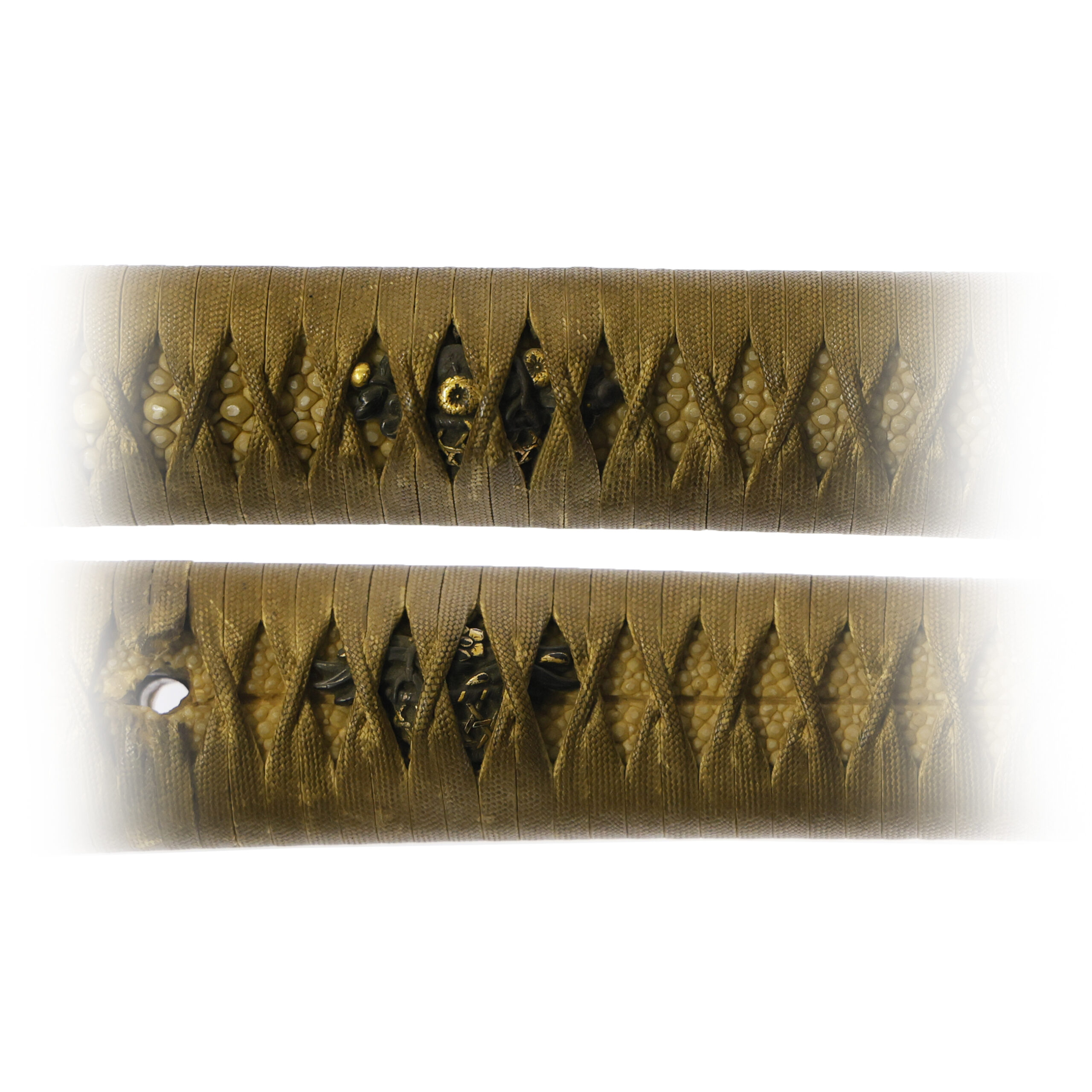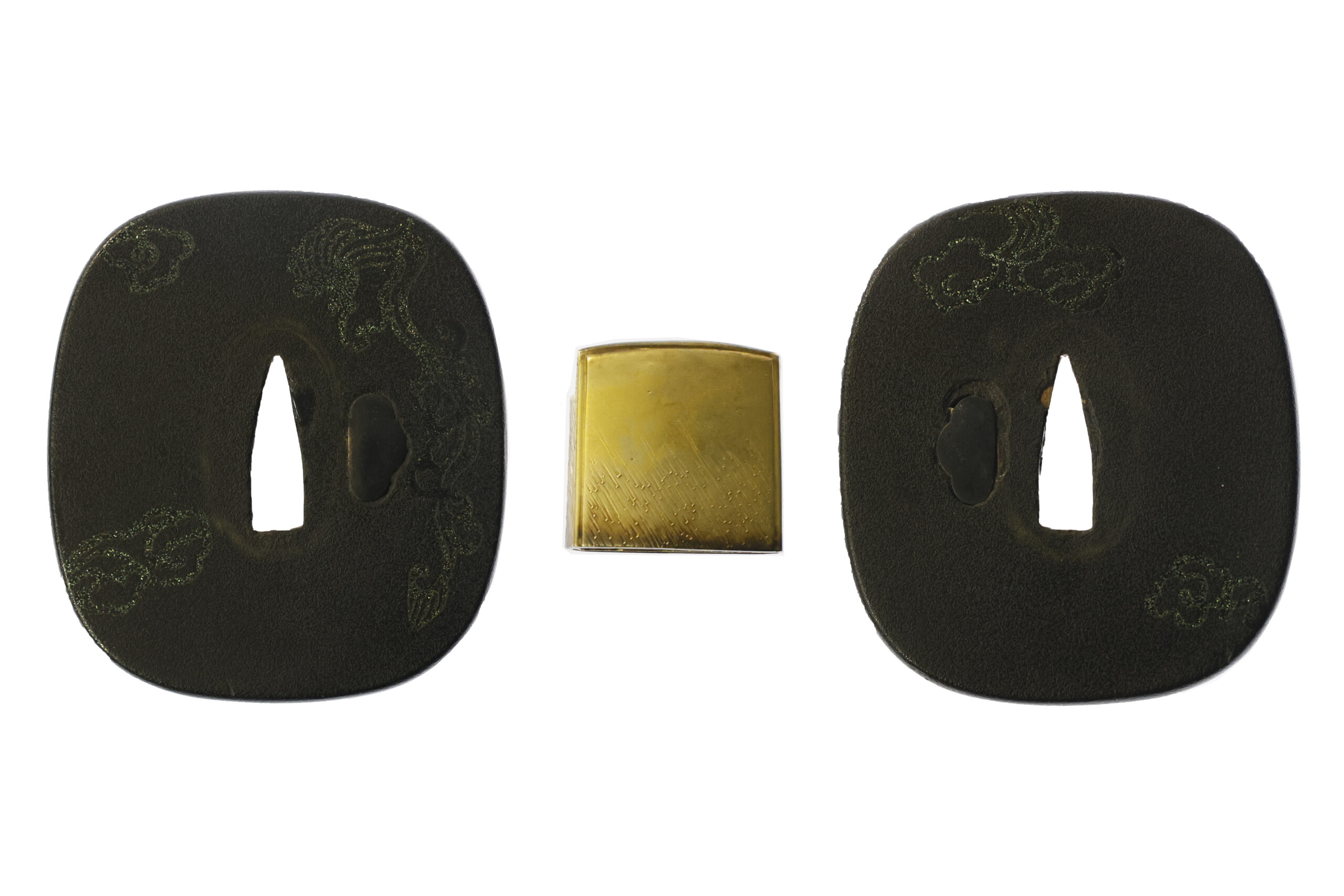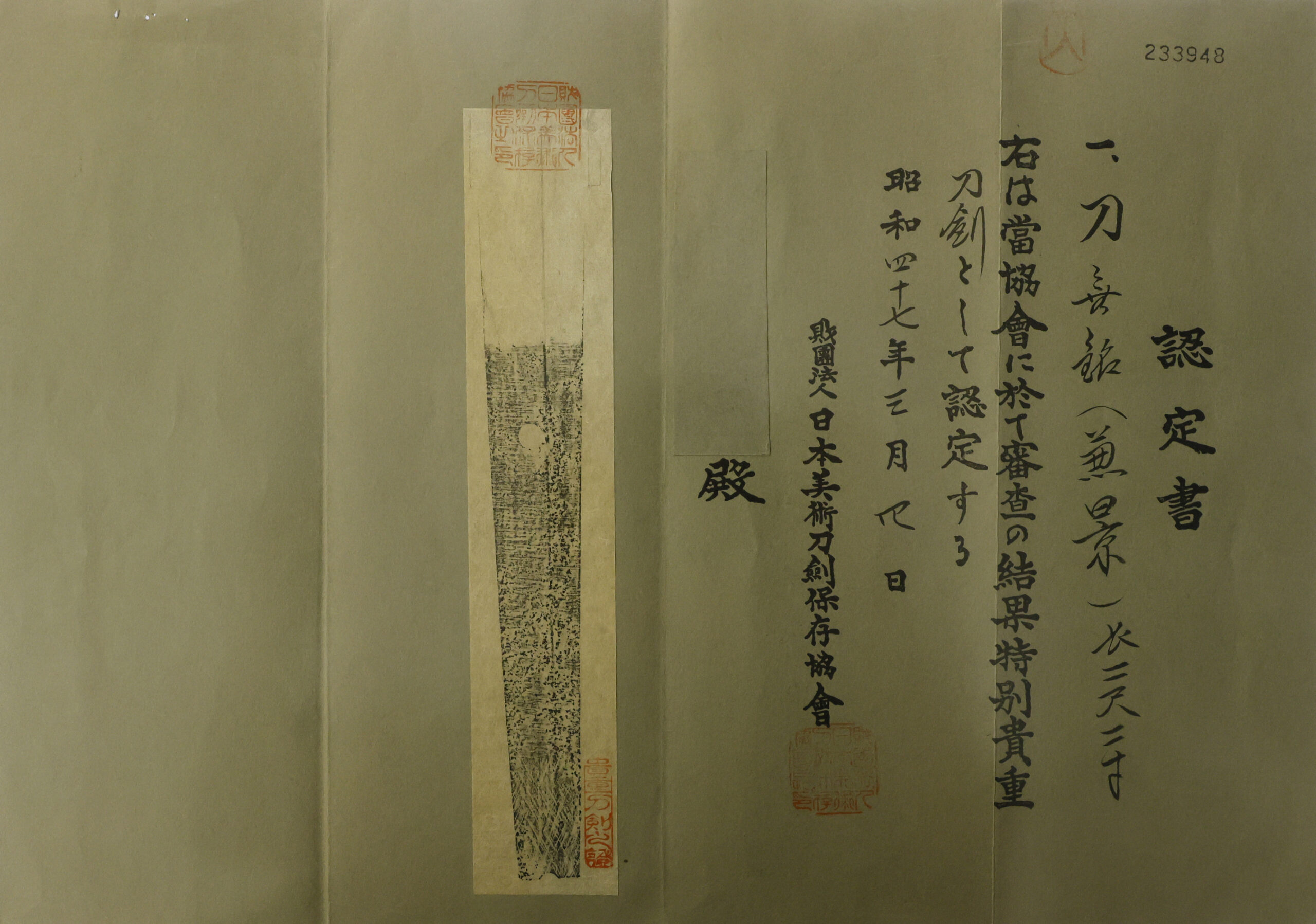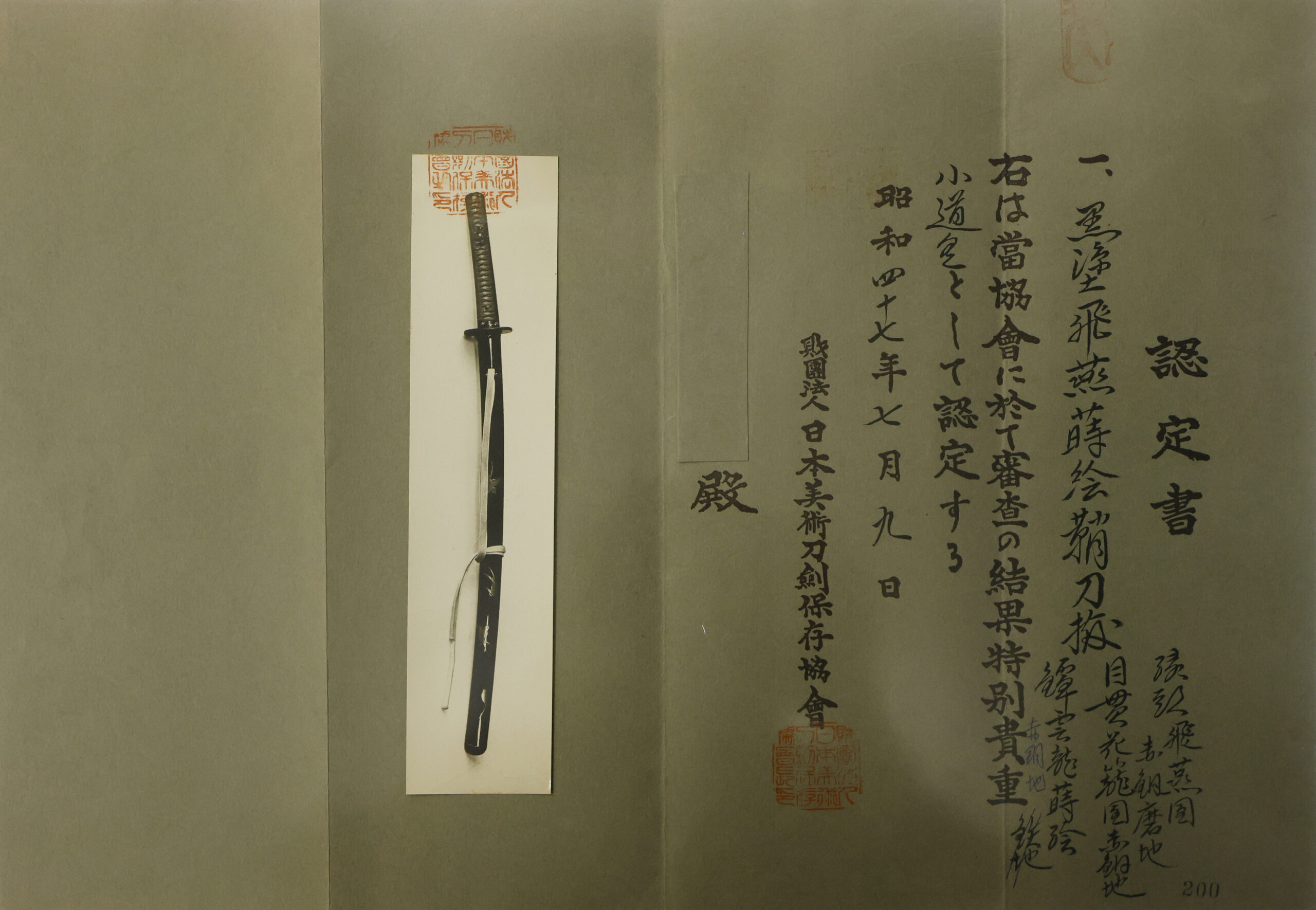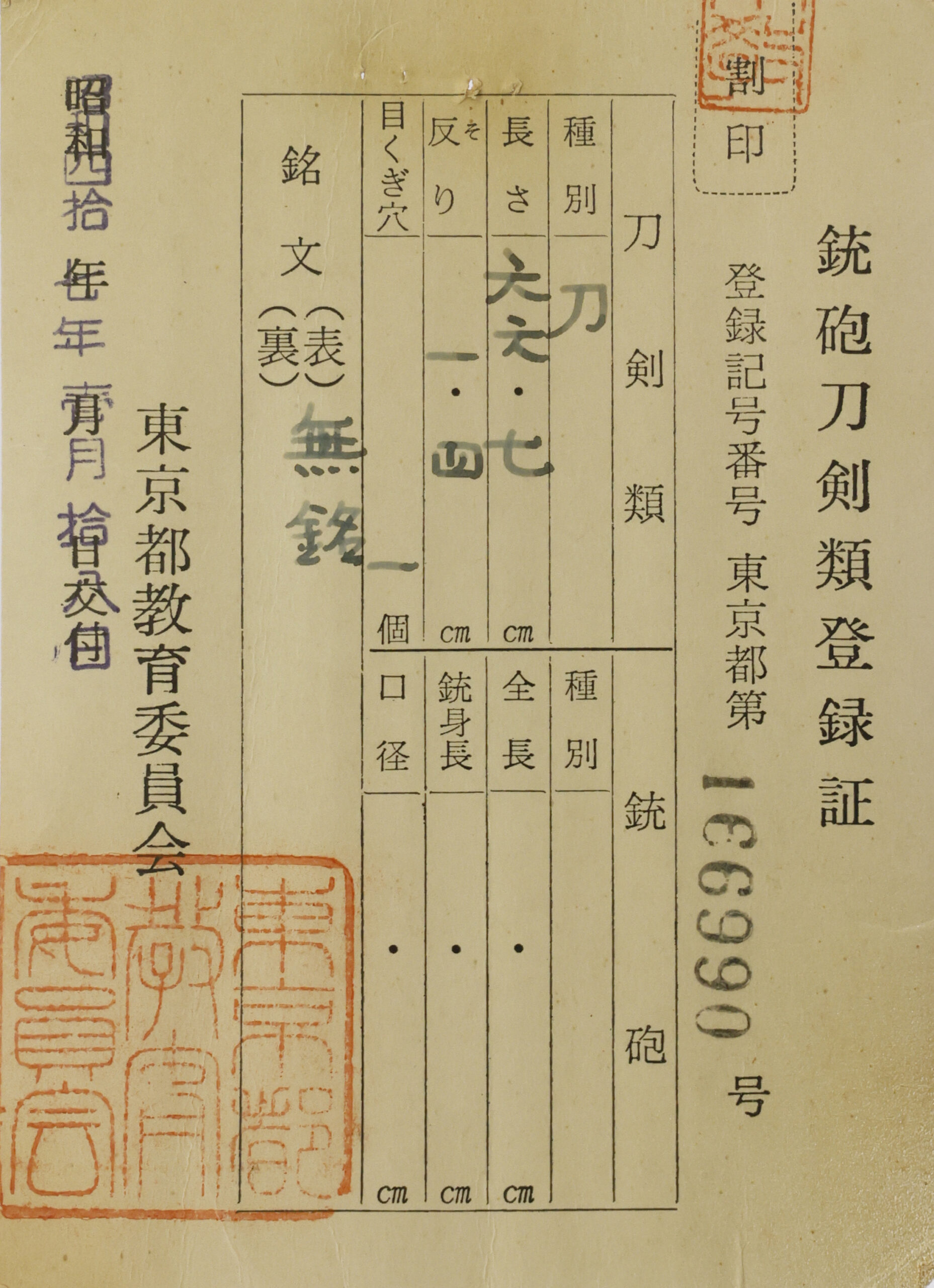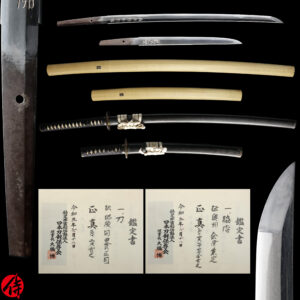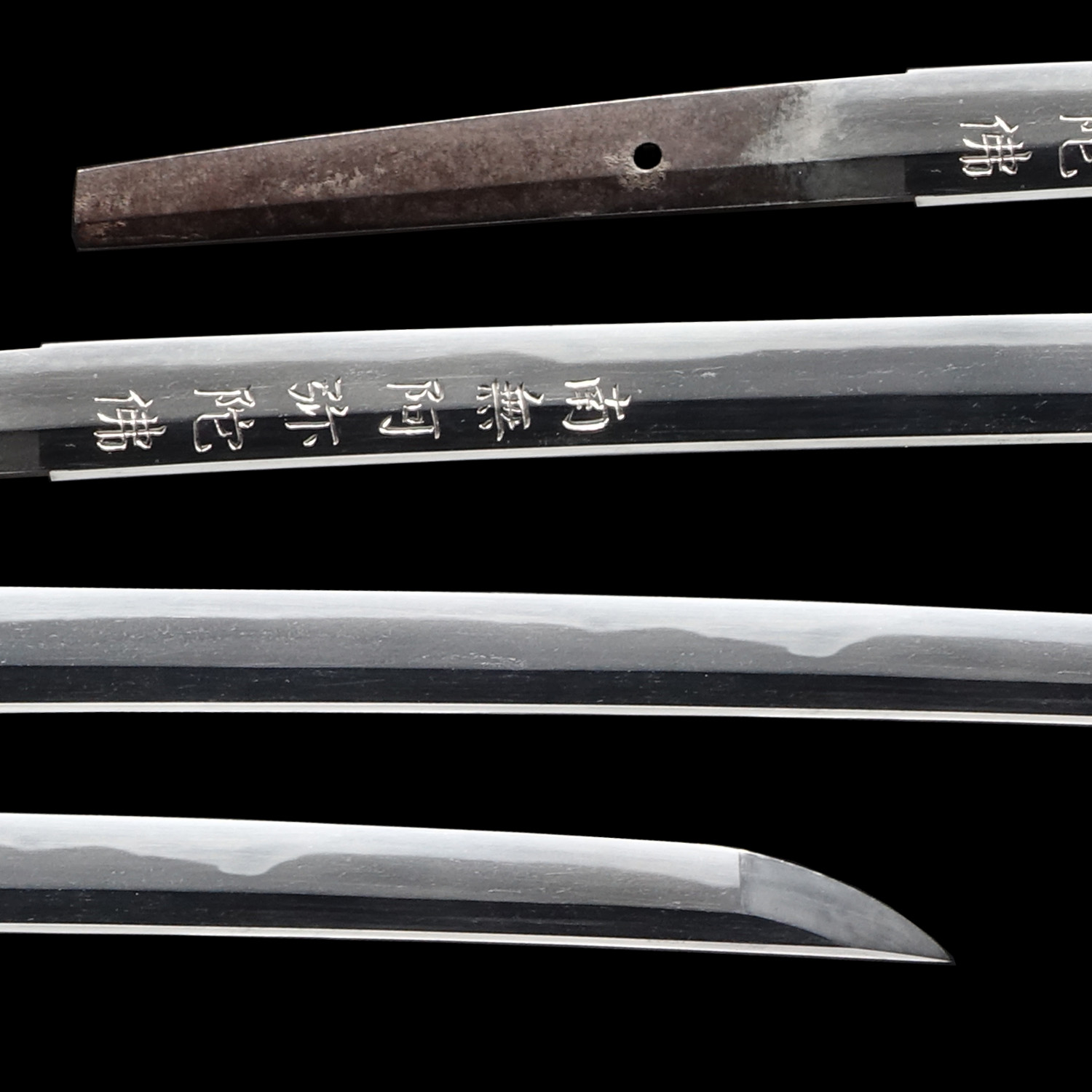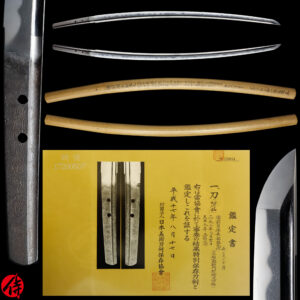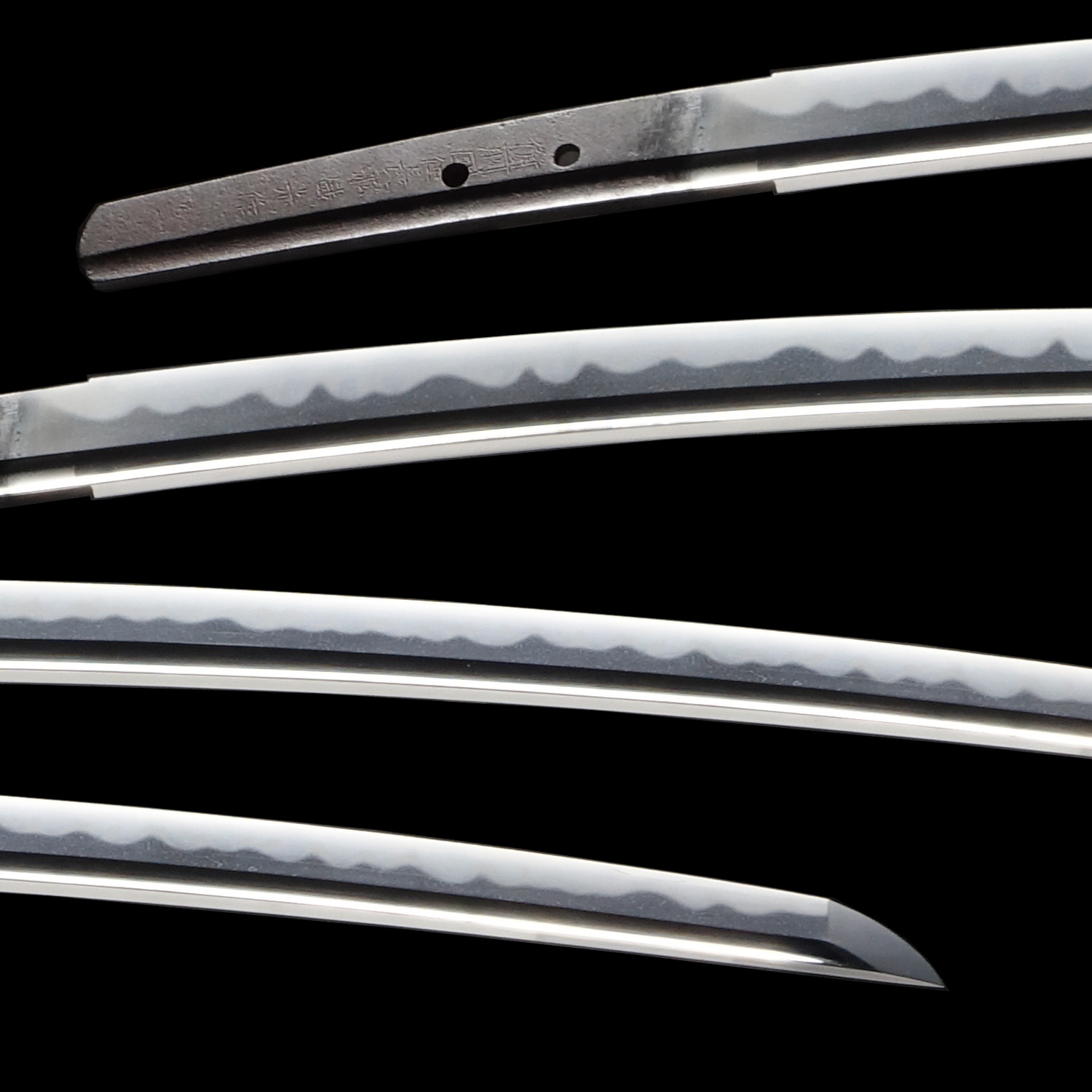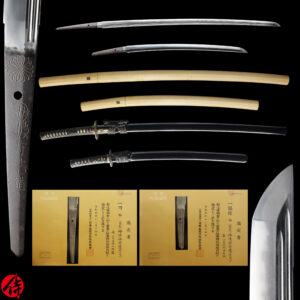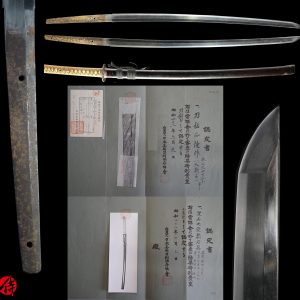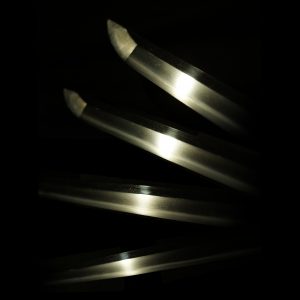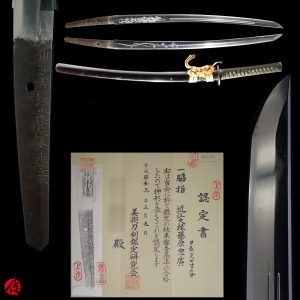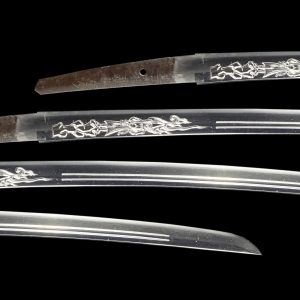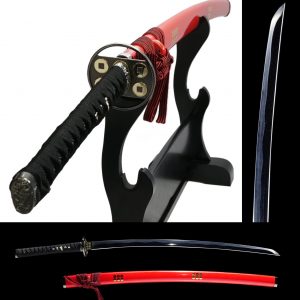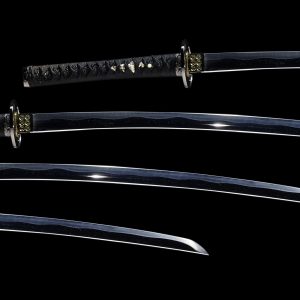Antique Japanese Sword Katana Attributed to Kanekage with Tokubetsu Kichou Certificate
【Description】
Summary
This blade is attributed to Kanekage(兼景). The maker’s name, Kanekage, lasted a few generations from the early Muromachi period to the Edo period. We believe NBTHK gave an attribution to a late gen Kanekage in the late Muromachi period (early-mid 16th century), based on its characteristic. He resided in Seki city, located in Mino province (Today’s Gifu prefecture). In Mino province, Seki city was the most active one in sword-forging. The first-gen Kanekage was the son of Naoe Kaneyuki (直江兼行), who connected to the first-gen Kaneuji, one of Masamune Jittesu (正宗住哲). the first-gen Kanekage belonged to Naoe Shizu school in Mino province.
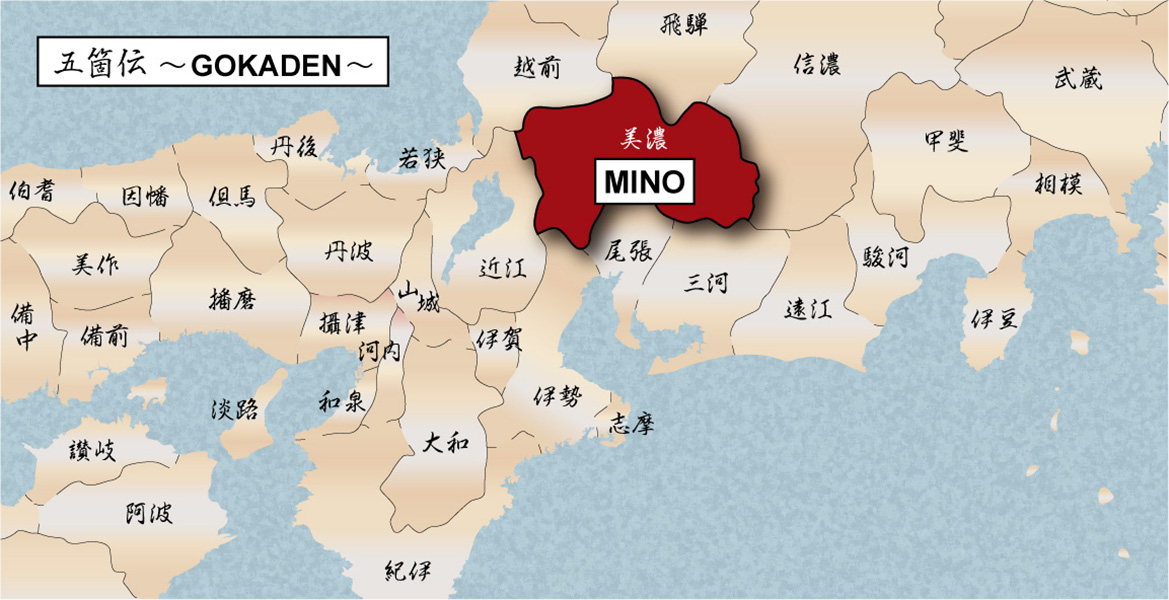

The swordsmiths of Mino province, with their unwavering dedication and unparalleled craftsmanship, developed a unique sword-forging tradition known as MINO-DEN. This tradition was characterized by the TOGARI(Pointed shapes protruding from the Hamon ) in a classic straight line and a random temper line with some white Utsuri. MINO-DEN, with its roots in YAMATO-DEN in the late KAMAKURA period(1280-1330), flourished during the Nanbokucho-Muromachi period(1333-1573) and continued its legacy until the Edo period(1603-1868). The evolution and endurance of MINO-DEN stand as a testament to the skill and artistry of these swordsmiths.
MINO-DEN especially prospered during Sengoku Jidai (Warring State period) due to the high demand for weapons. And the location of Mino province beat others. Akechi Mitsuhide controlled Mino province, Nobunaga Oda ruled Owari province, and Tokugawa Ieyasu was the lord of Suruga (Neighboring areas). There was high demand from those powerful feudal lords and their retainers. Furthermore, so many wars occurred between the Kanto region and the Kyoto area. Mino was located in the middle, making feudal lords feel it was convenient to order swords from MINO-DEN. The blades forged in MINO provinces also had a reputation for their practical design and sharpness. Many feudal lords demanded swords forged in the Mino province.
*Please keep in mind that there are a couple of Kitae Kizu on this blade. If you like to know the detailed condition, please feel free to contact us.
【 Blade】
Cutting Edge Length(Nagasa):66.7 cm (26.2 inches)
Curvature(Sori):1.4 cm (0.55 inches)

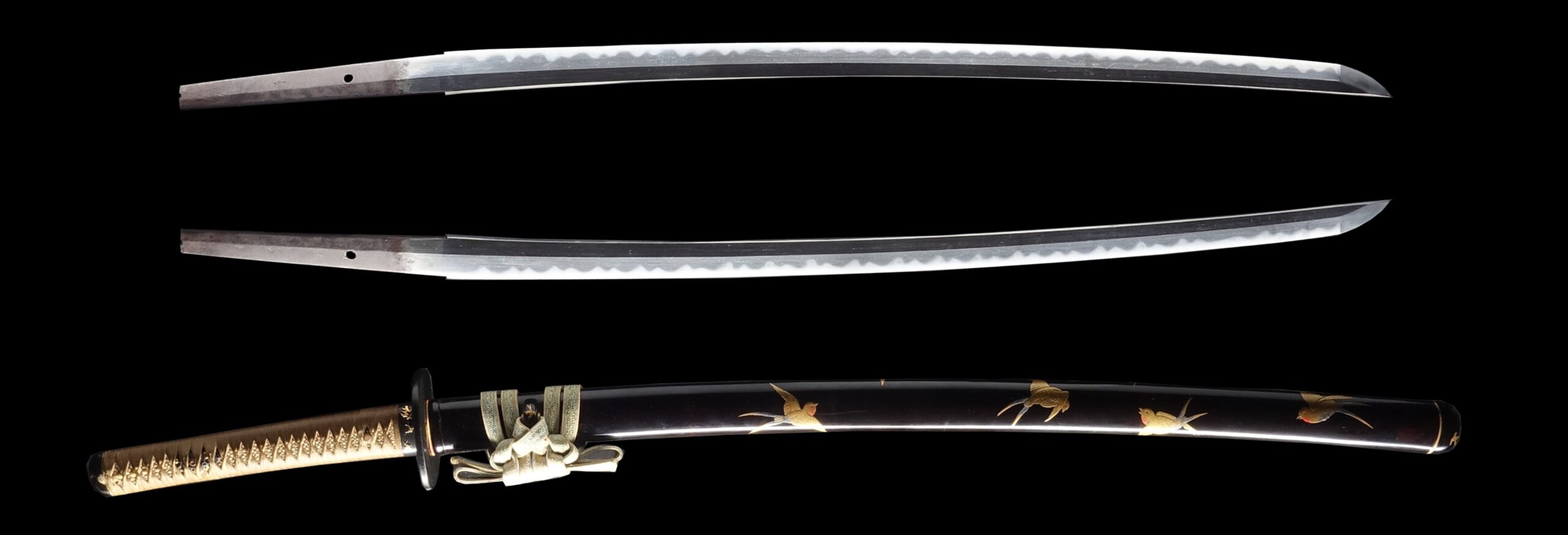
Hamon:
The crystalline structure which forms along the cutting edge of a blade as a result of the hardening process
Jimon(Jihada):
visible steel surface pattern created by folding and hammering during forging process

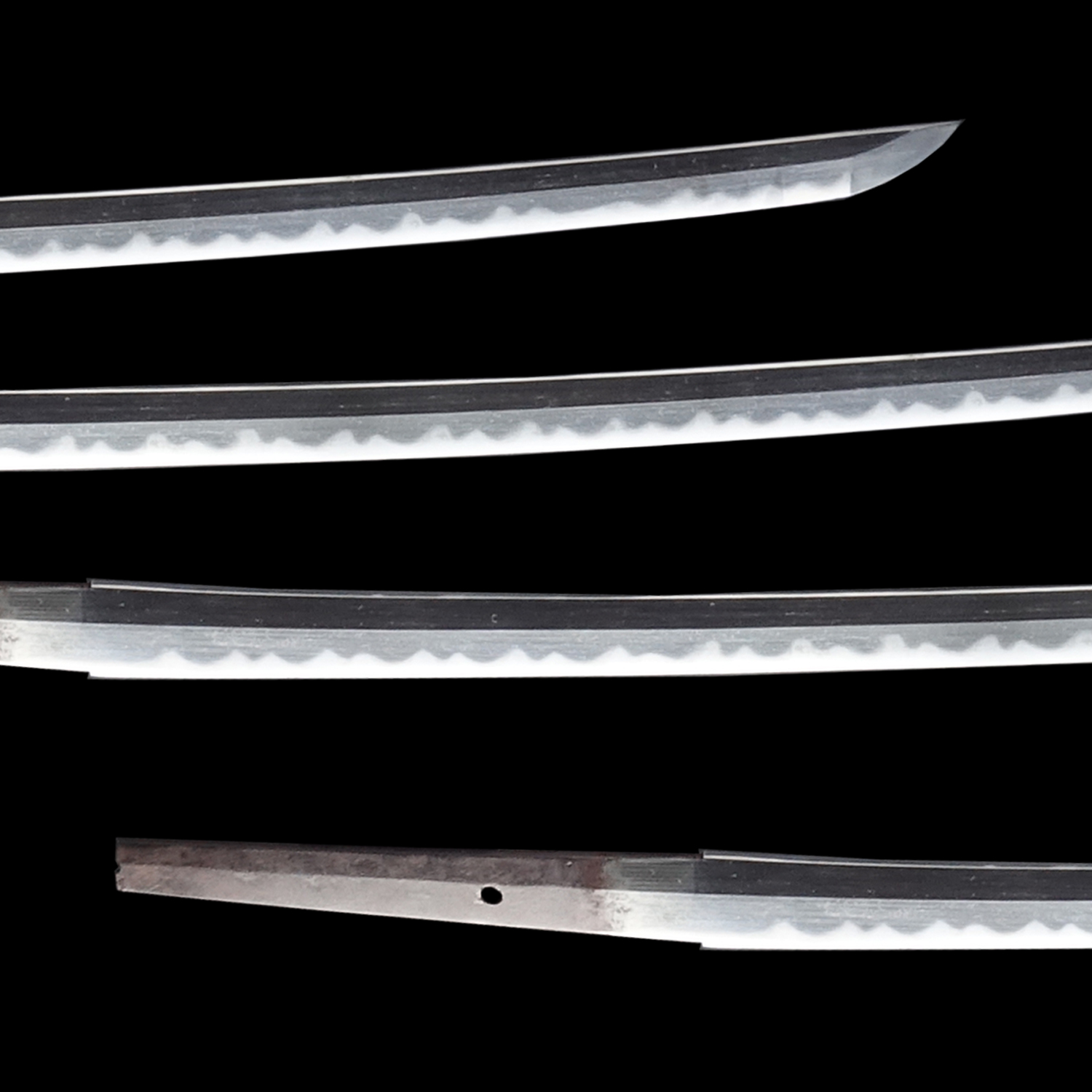
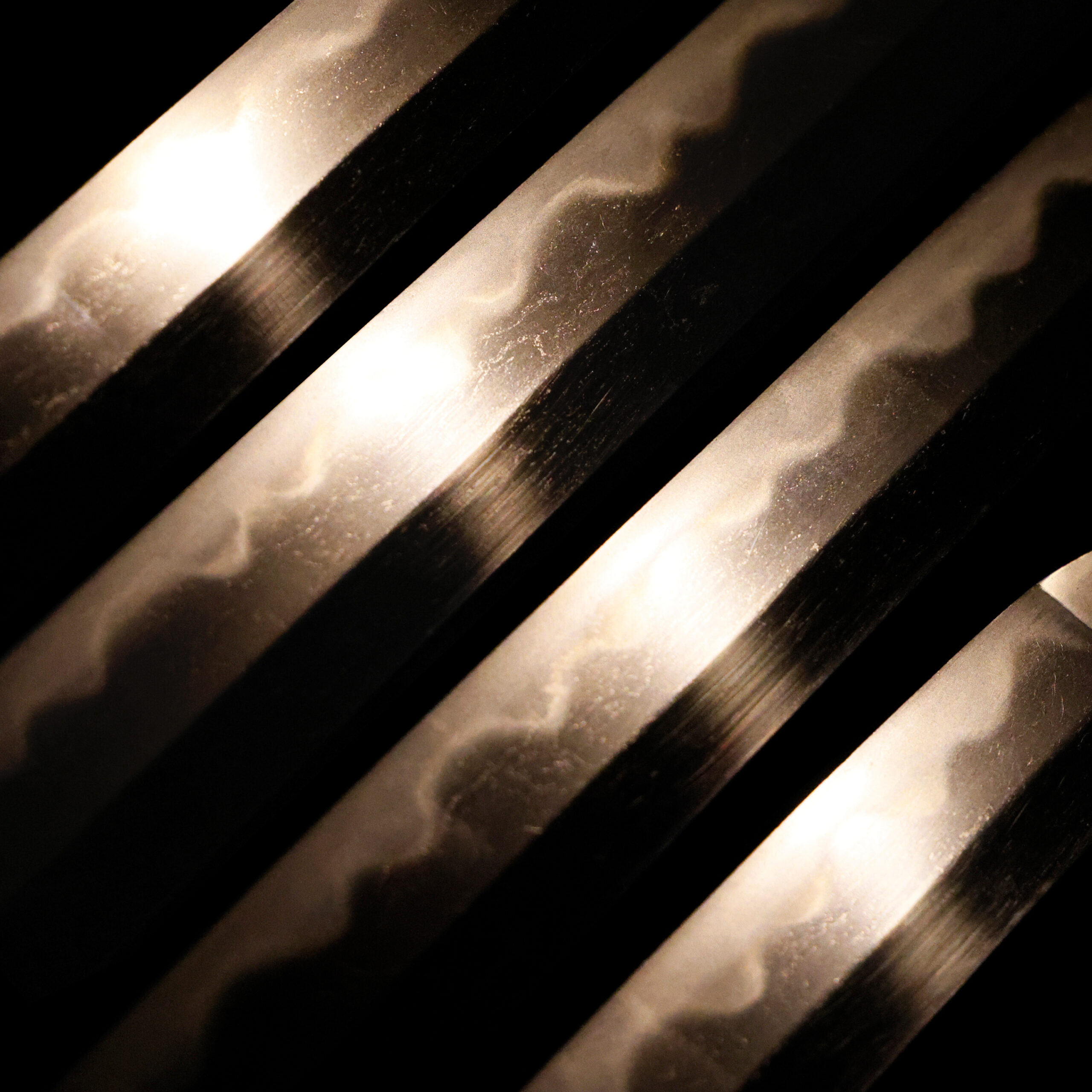
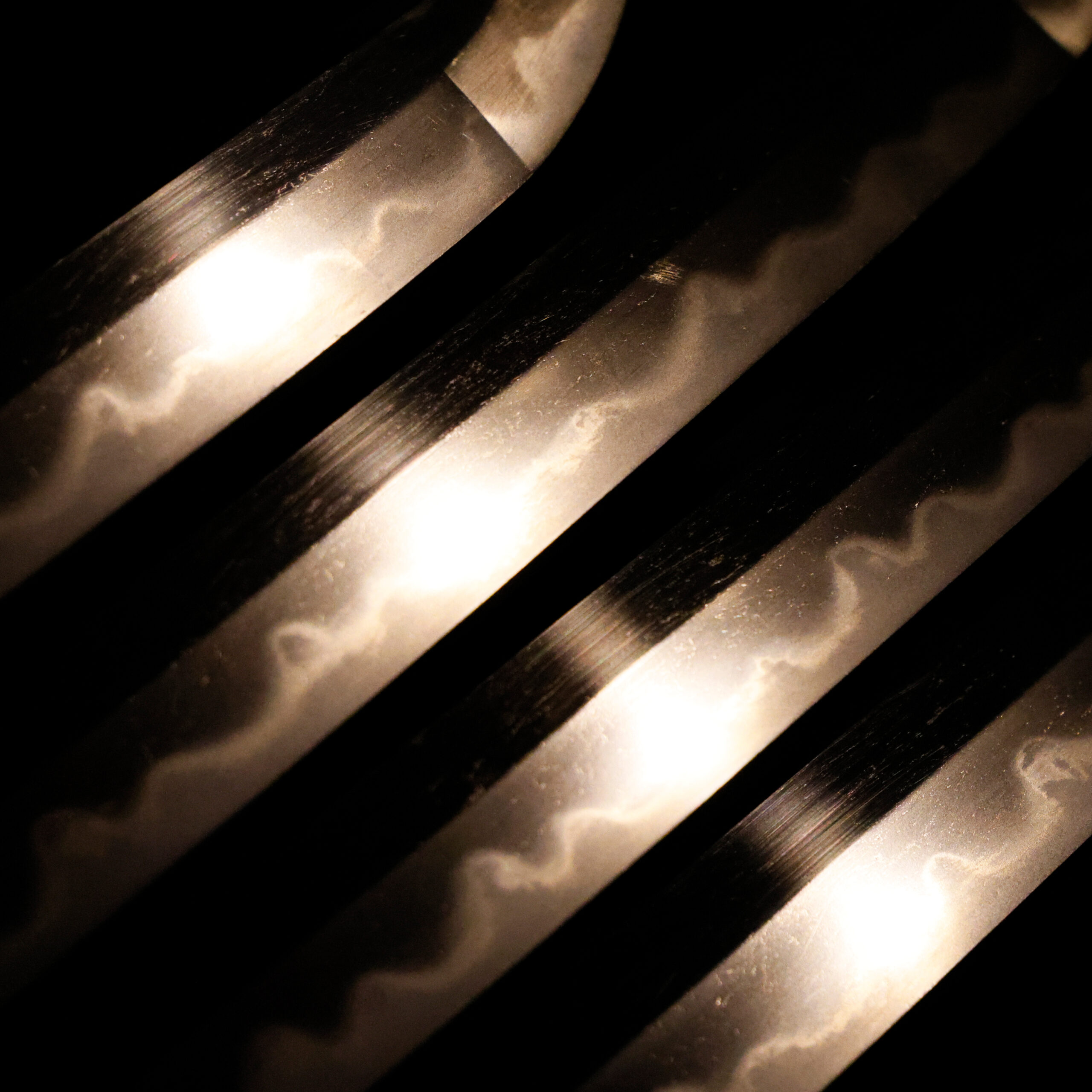
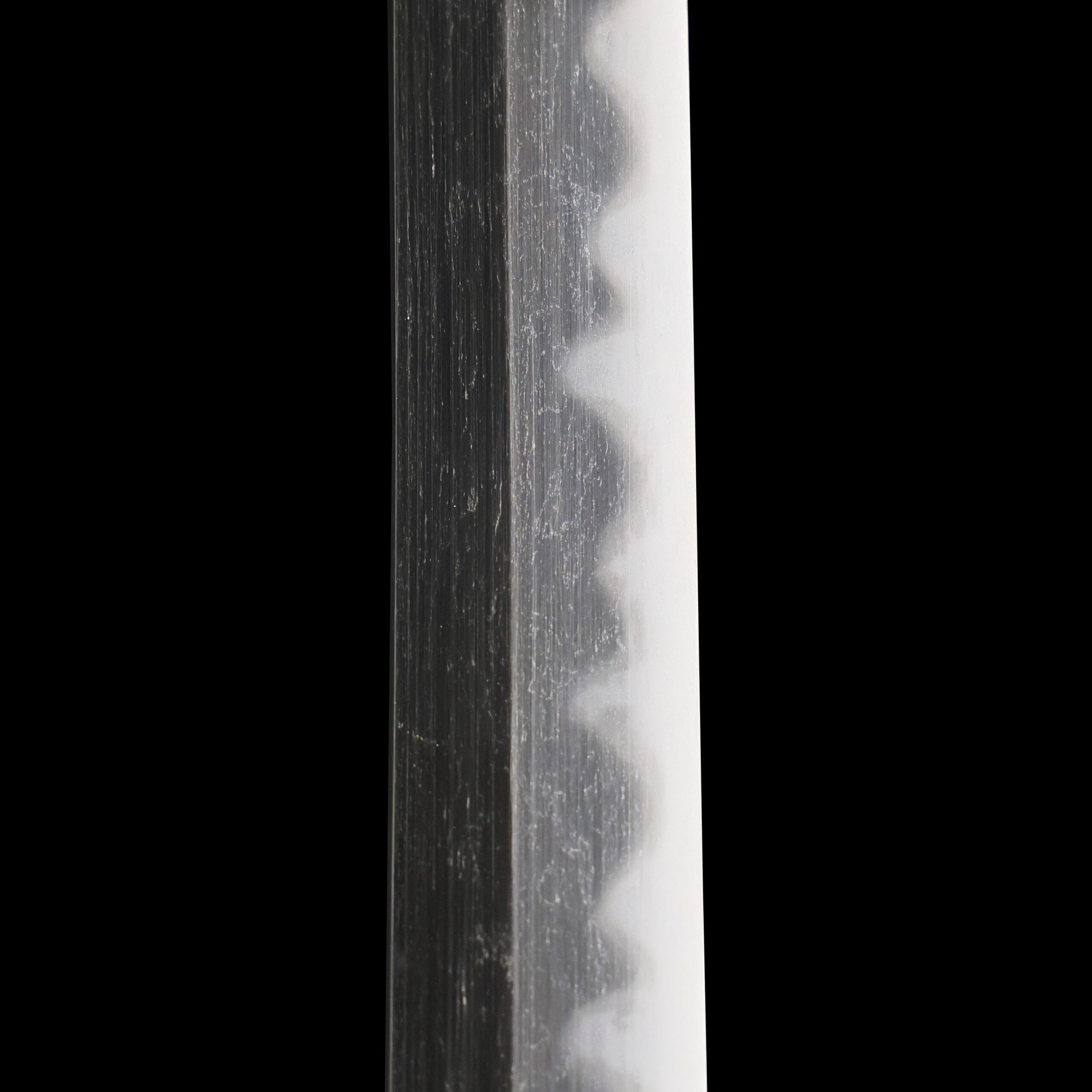
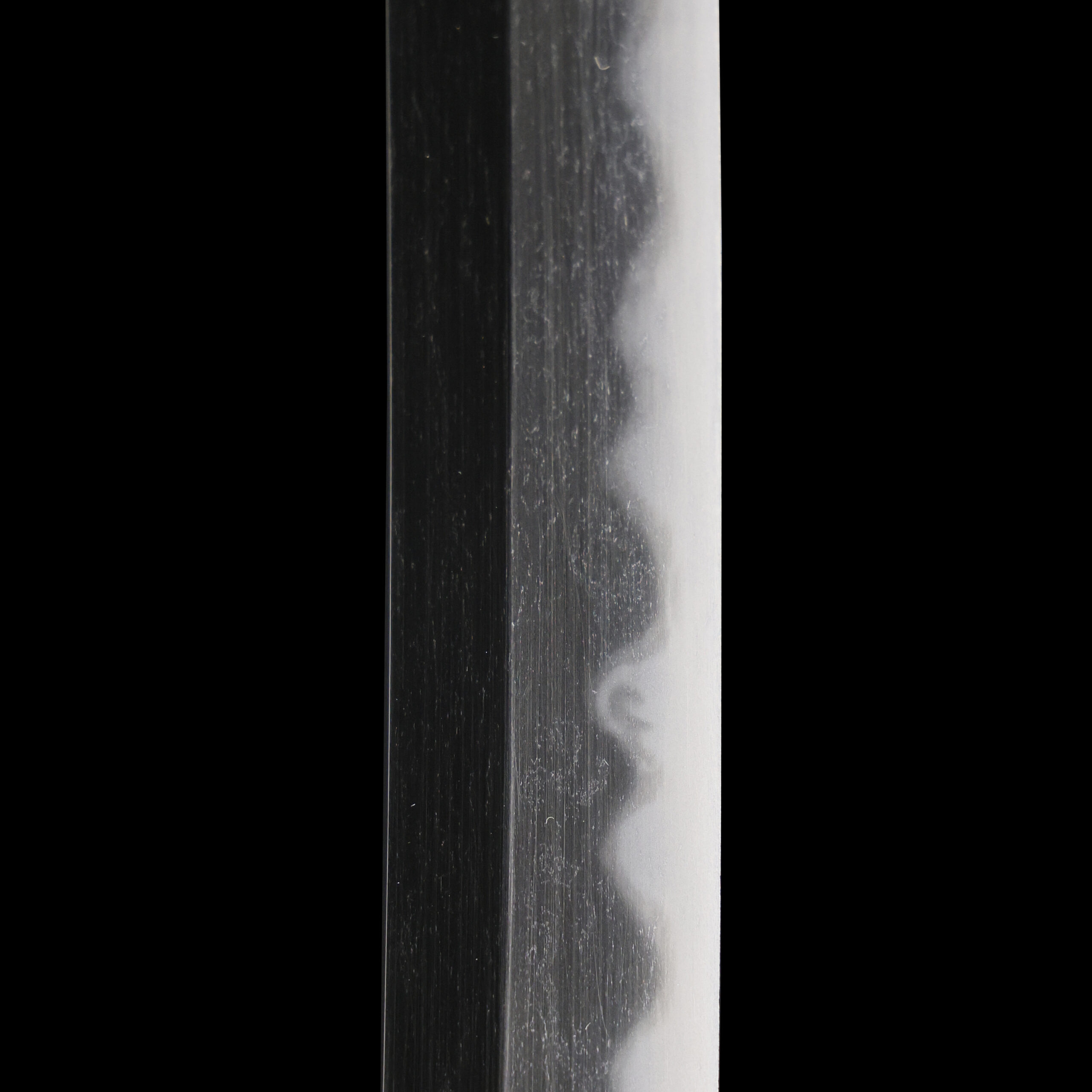
Kissaki:Kissaki is the tip of the Japanese sword.
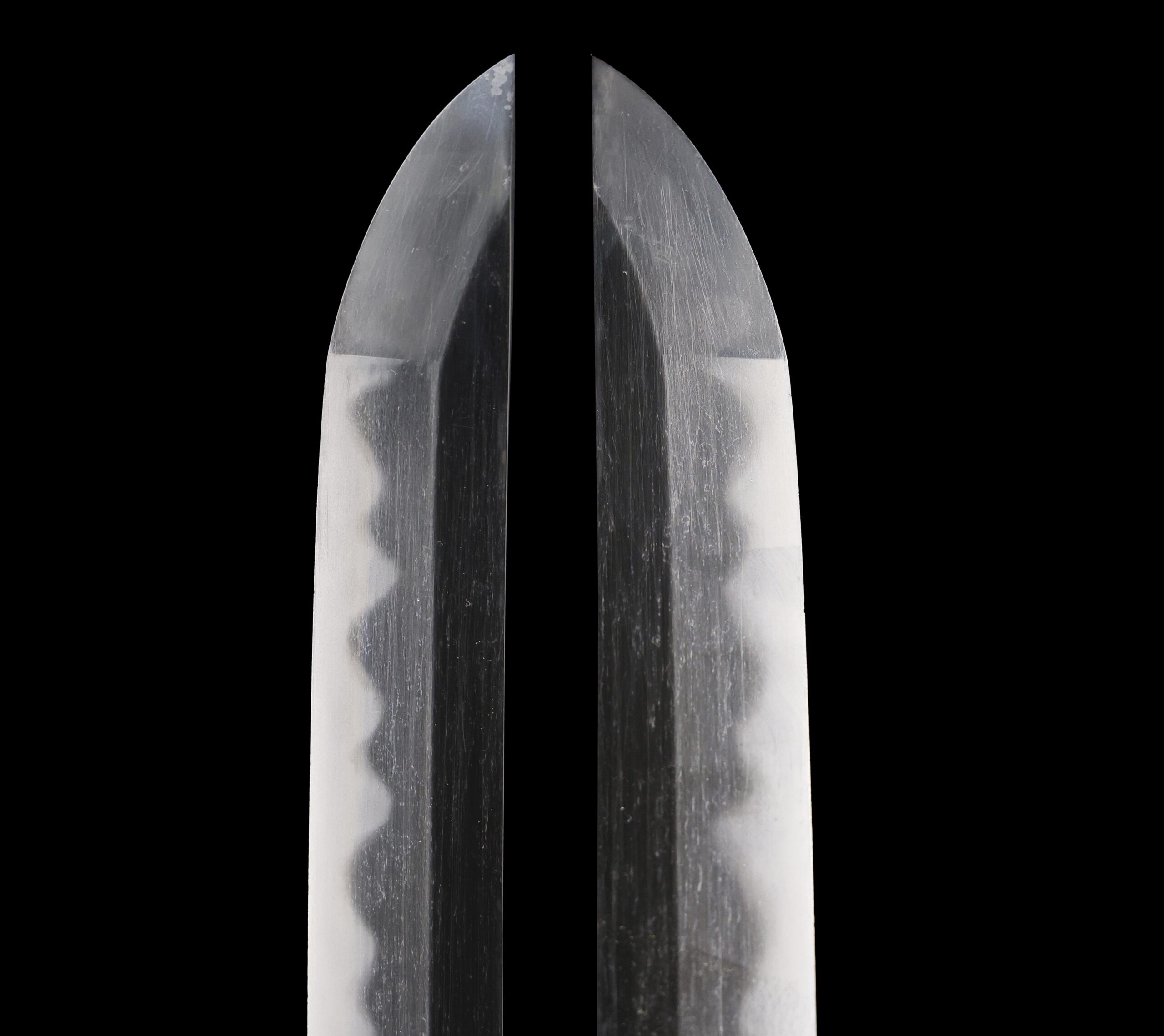
Nakago:Nakago is the tang of the Japanese sword.
Japanese swordsmiths left the black rust on the tang because it prevents red rust while the tang is in its handle. And the discoloration of the tang was created over time, and it is a great indicator for a Japanese sword specialist to estimate when the sword was forged.
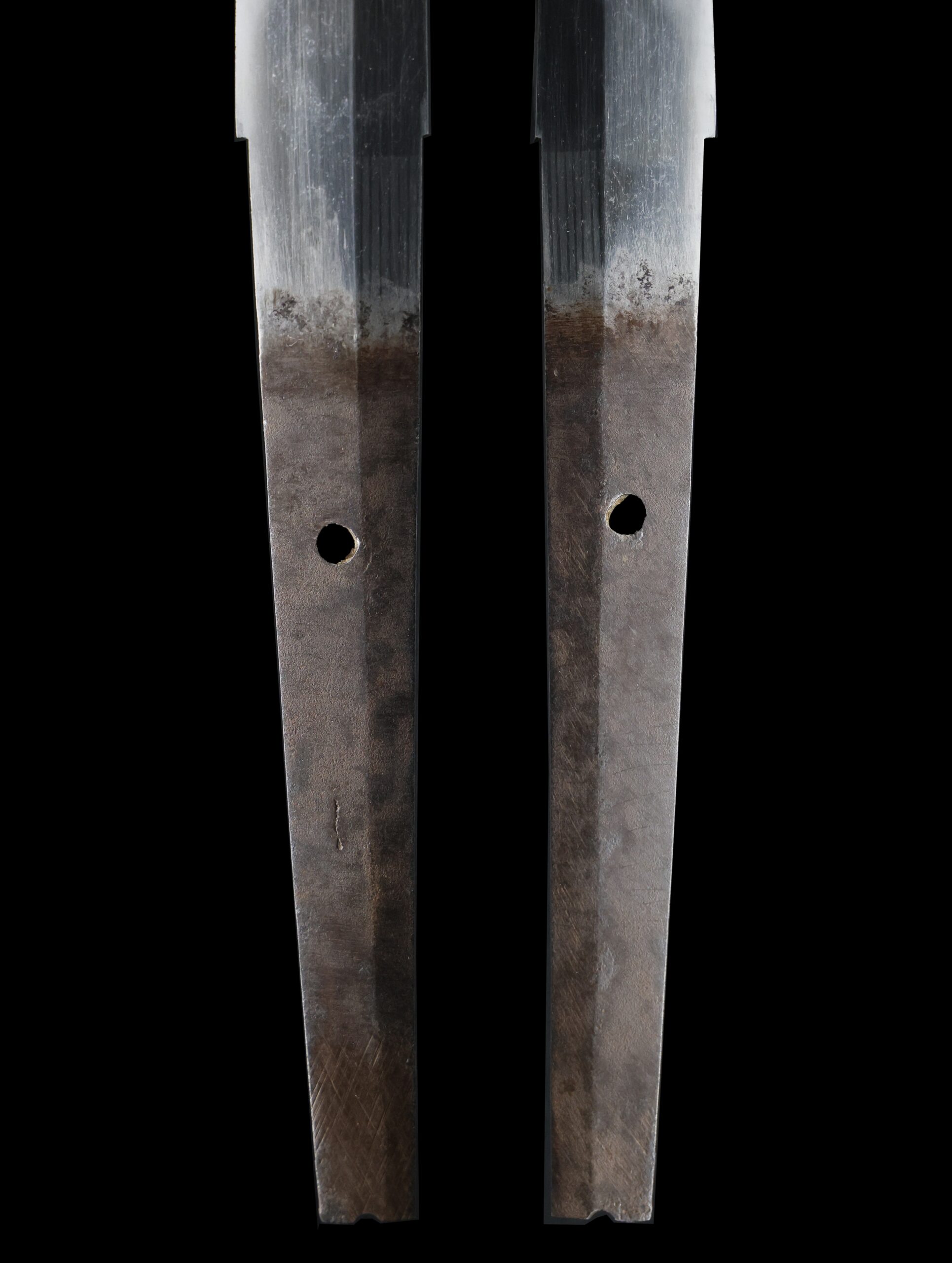
Koshirae:Koshirae is the mounting of the Japanese sword. There are several parts that consist of Koshirae such as Saya (Scabbard), Tsuka (Handle), Tsuba (Handguard).
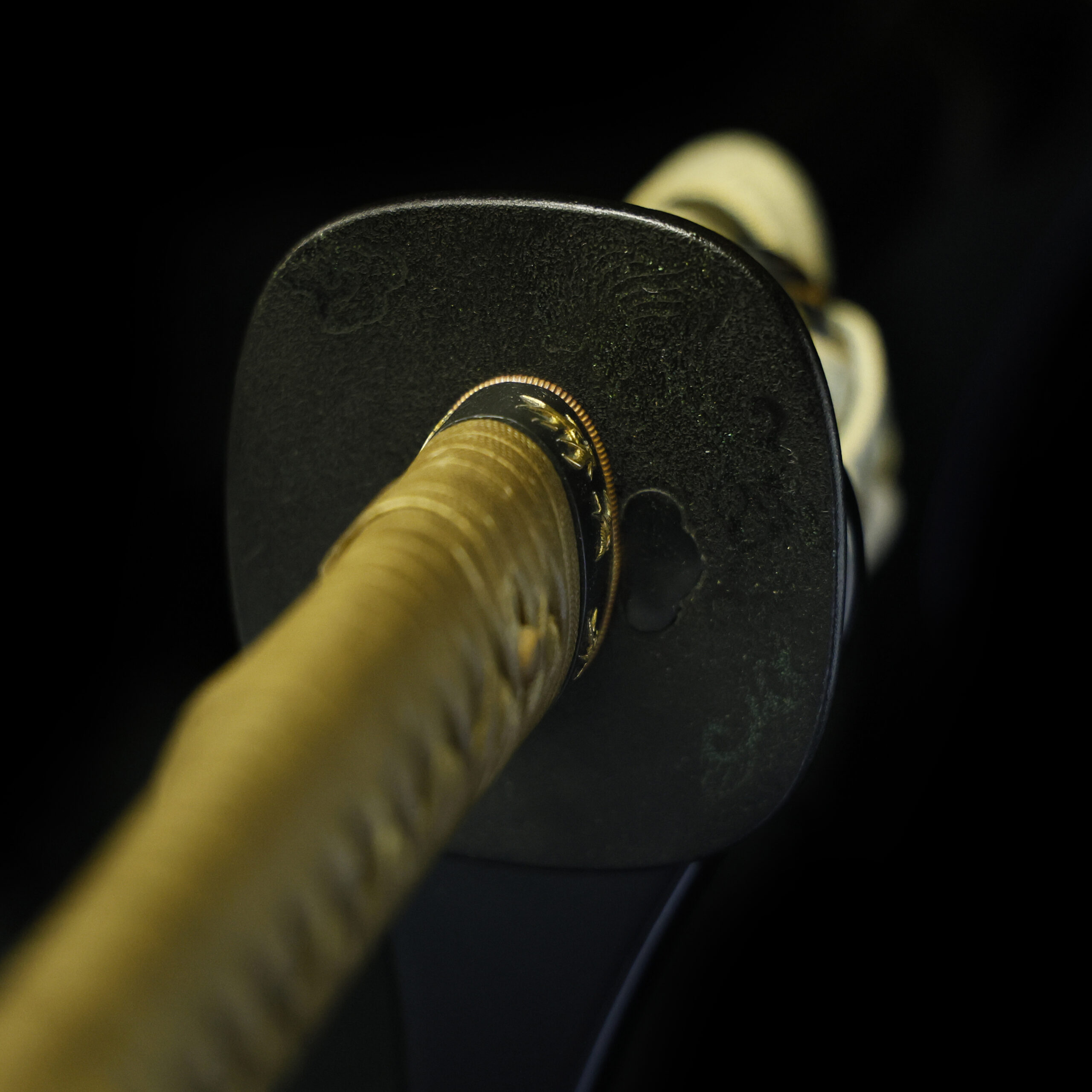
Fuchi-Kashira:A pair of matching sword fittings that cover the upper and bottom parts of its sword hilt.
This fuchi-kashira also features a swallow motif, matching the design of the saya, creating a sense of unity throughout the sword fittings.
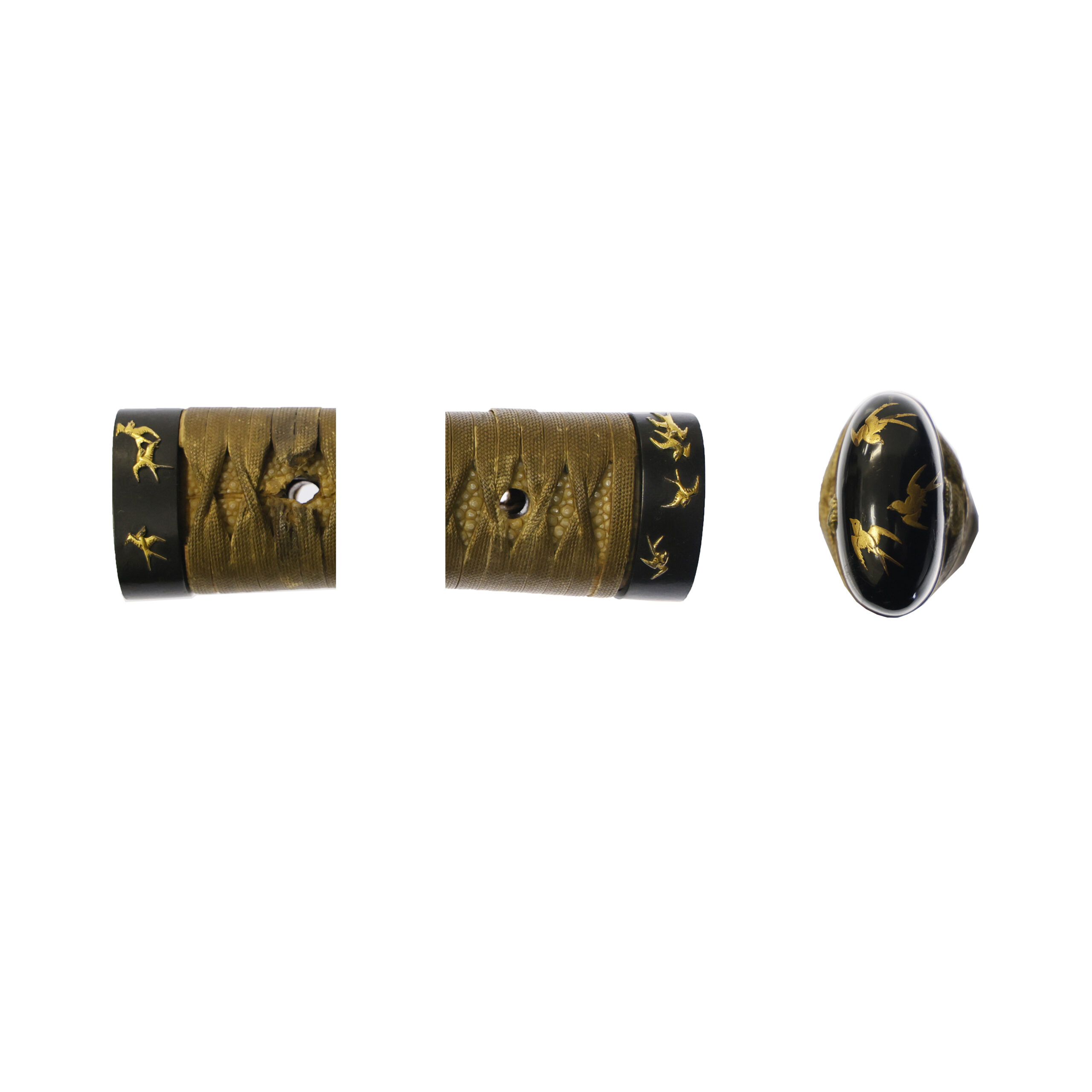
Tsuka and Menuki:Tsuka is the handle of the Japanese sword and Menuki is its decoration.
This menuki features a traditional design based on a chrysanthemum flower basket (菊花籠, kiku hana-kago). The chrysanthemum (菊, kiku) has long been revered in Japan as a symbol of nobility, longevity, and renewal, and it is also used as the emblem of the Imperial family. The flower basket(hana-kago) has likewise been used since ancient times as a vessel for arranging and displaying seasonal flowers.

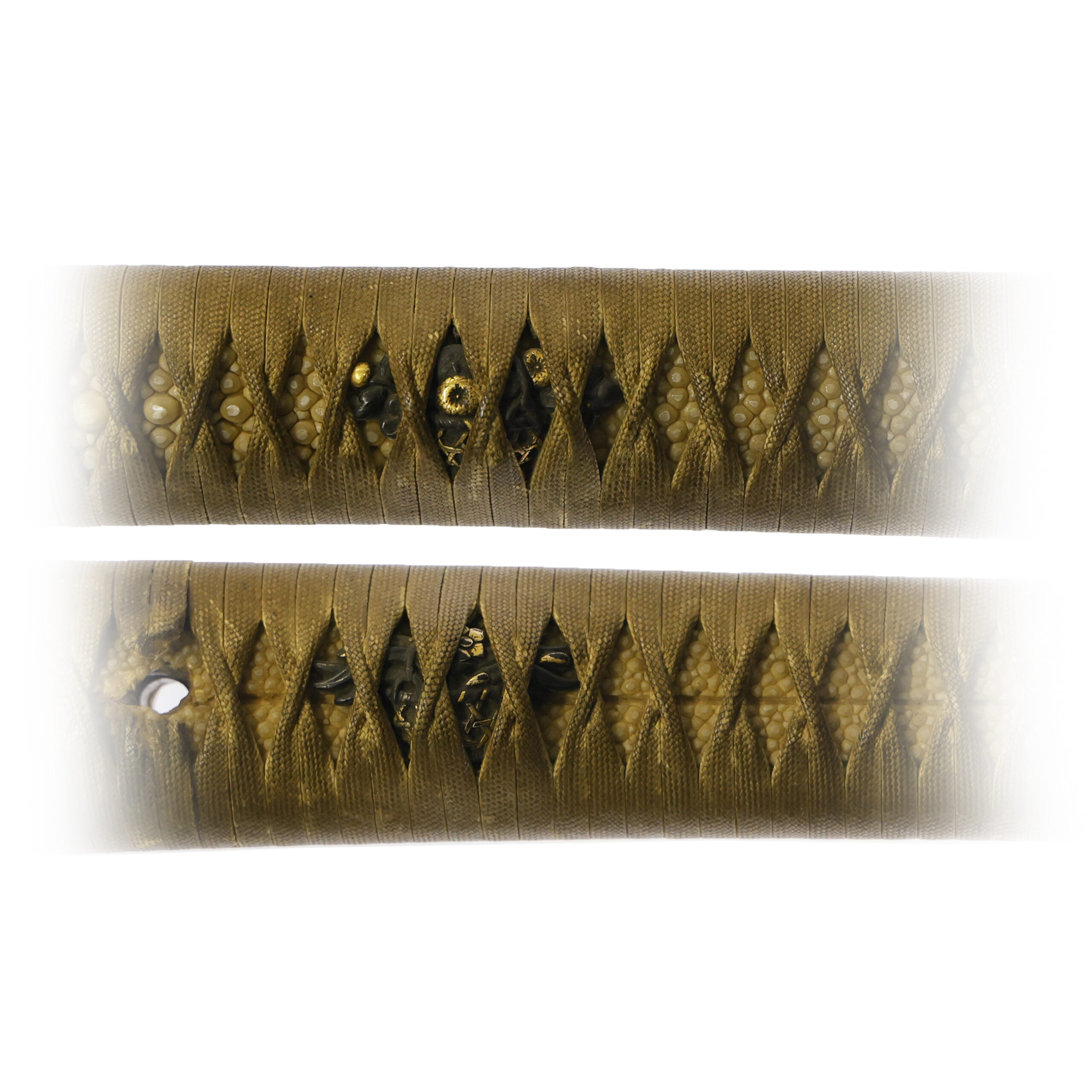
Tsuba and Habaki:Tsuba is the handguard for the Japanese Sword and Habaki is the equipment to make the blade not touch its scabbard inside. It prevents the blade from getting rusty and chipped.
This tsuba is made of shakudō (赤銅地, a copper-gold alloy with a deep patina) and features a dragon among clouds (雲龍, unryū) depicted using the maki-e technique—a traditional Japanese lacquer art in which designs are created with sprinkled gold or silver powder. The dragon has been a revered mythical creature in East Asian cultures since ancient times, symbolizing power, wisdom, and protection. In Japan, dragons are often associated with water, rain, and natural forces, and are believed to bring good fortune and strength. The cloud-and-dragon motif represents a dynamic balance between heaven and earth, power and grace—a timeless theme in Japanese art and craftsmanship.
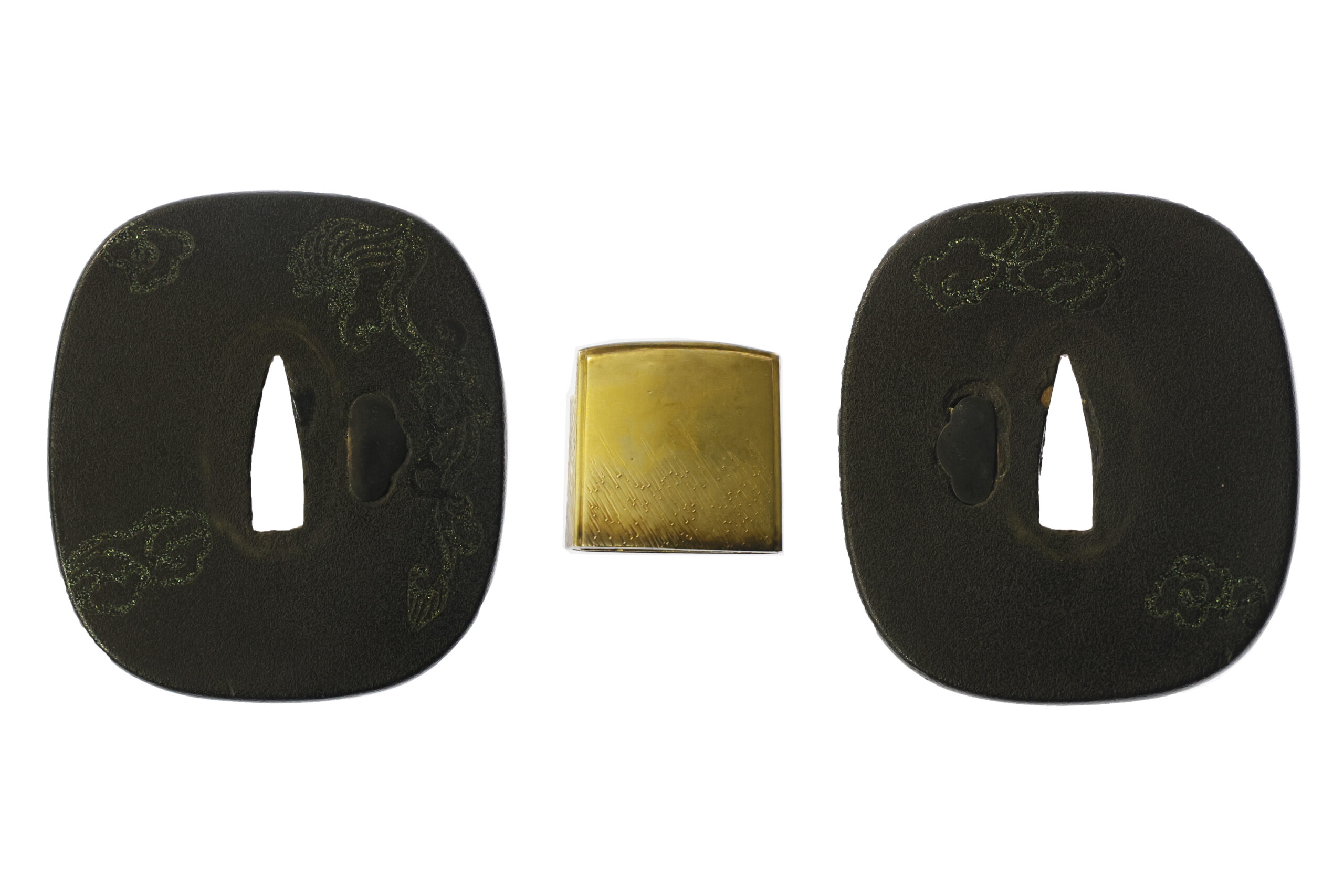
Saya:Saya is the scabbard for the Japanese sword.
The saya (scabbard) is decorated with a design of swallows, birds that are deeply familiar and cherished in Japan. Swallows are migratory birds commonly seen from spring to summer, and have long been regarded as harbingers of the season. Their swift flight, distinctive calls, and habit of building nests near human dwellings have made them a beloved part of everyday life. In Japanese culture, the swallow is seen as a symbol of spring, good fortune, and happiness, and often appears in traditional art and crafts as a positive and auspicious motif.

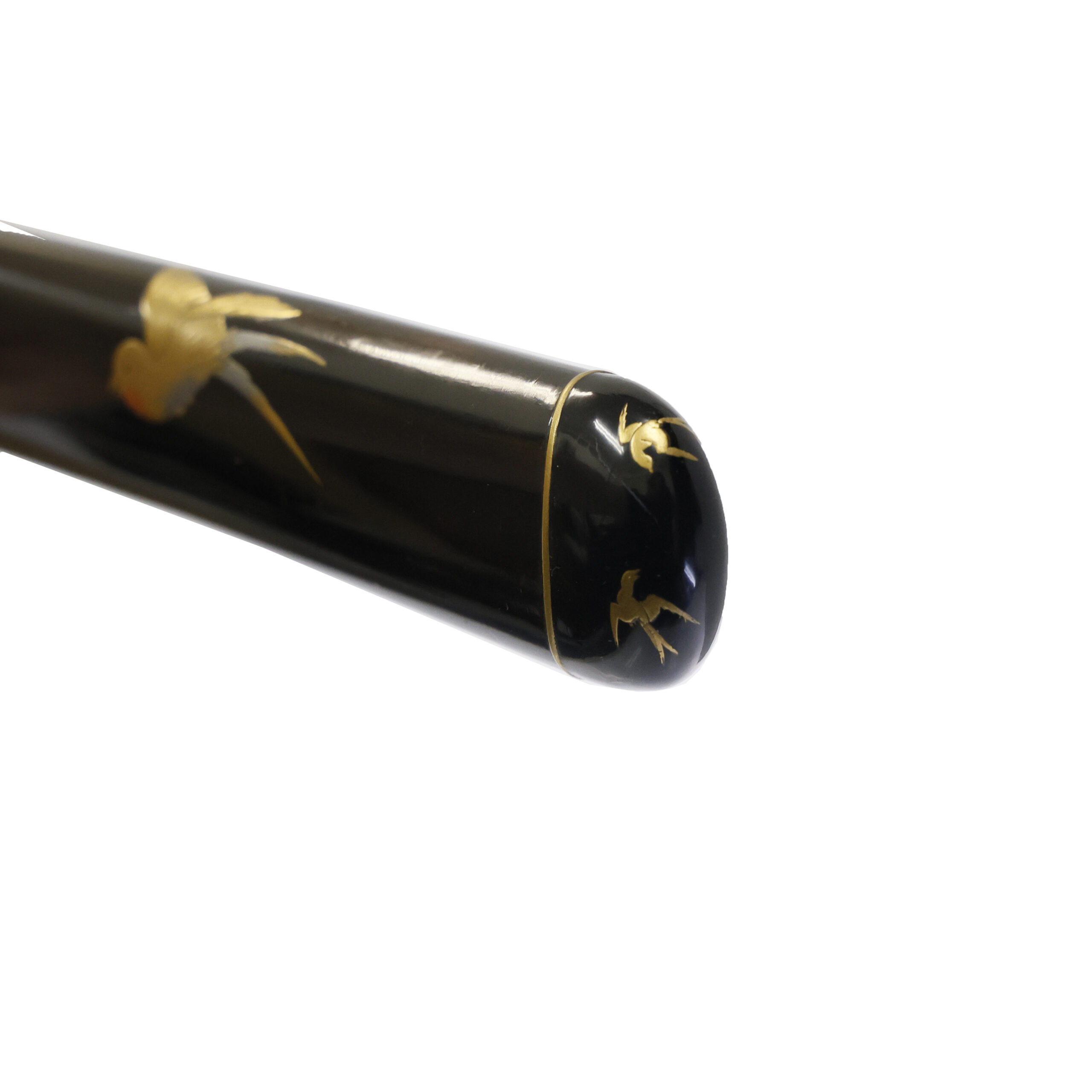
Authentication Paper:NBTHK TOKUBETSU KICHOU Certificate for the blade (No. 233948)
NBTHK, also known as Nihon Bijutsu Touken Hozon Kyokai (the Society for the Preservation of the Japan Art Sword), is one of the oldest Japanese sword appraising organizations in modern-day Japan. They authenticated the blade on March 9th in the 47th year of Showa (1972). They appraised it as Tokubetsu Kichou Touken, an old form of the certificate. The purchaser will receive this original certificate as well. We can also translate what is written into English and make a PDF file for your record if you request.
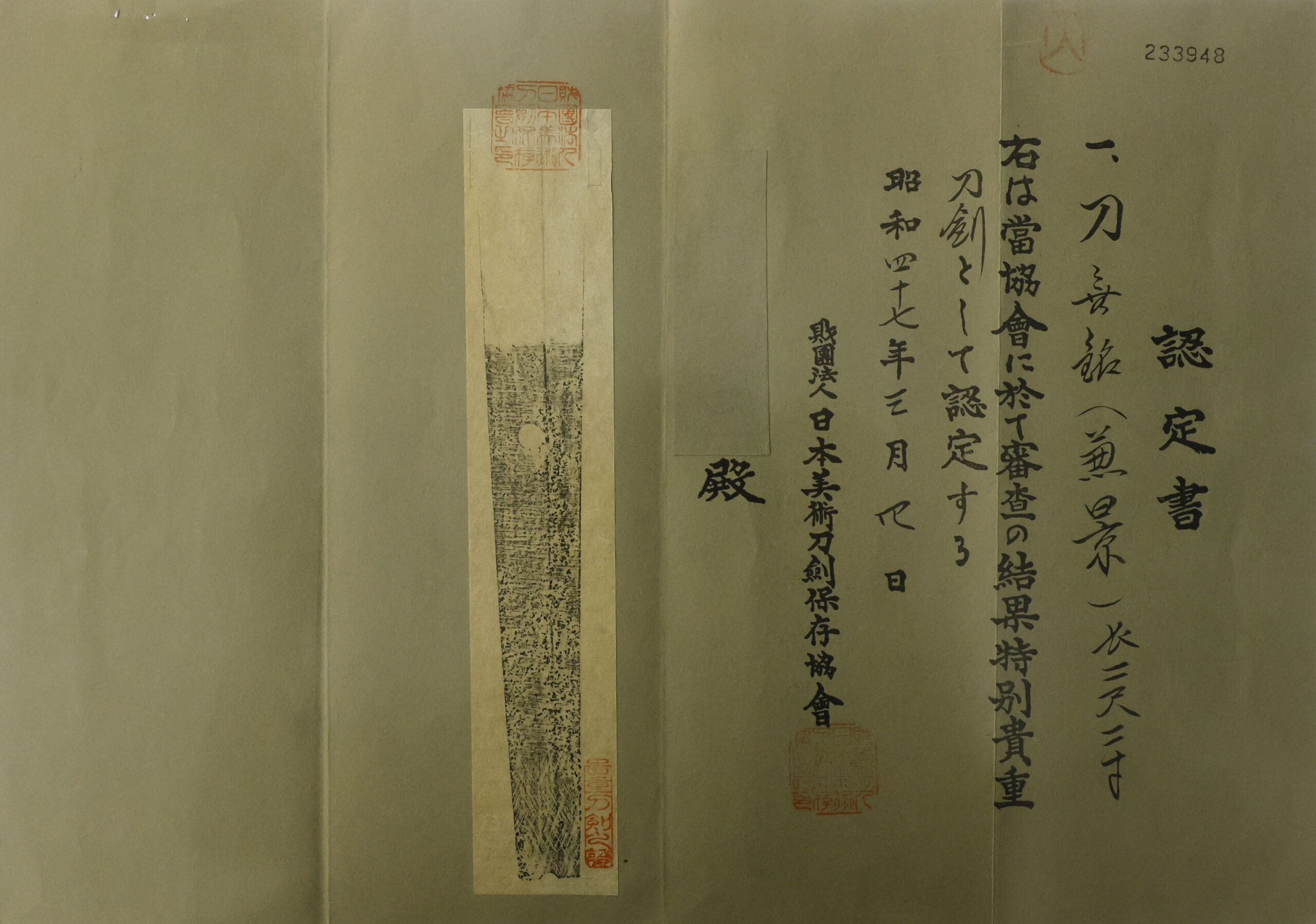
Authentication Paper:NBTHK TOKUBETSU KICHOU Certificate for the koshirae
NBTHK, also known as Nihon Bijutsu Touken Hozon Kyokai (the Society for the Preservation of the Japan Art Sword), is one of the oldest Japanese sword appraising organizations in modern-day Japan. They authenticated the blade on July 9th in the 47th year of Showa (1972). They appraised it as Tokubetsu Kichou Touken, an old form of the certificate. The purchaser will receive this original certificate as well. We can also translate what is written into English and make a PDF file for your record if you request.
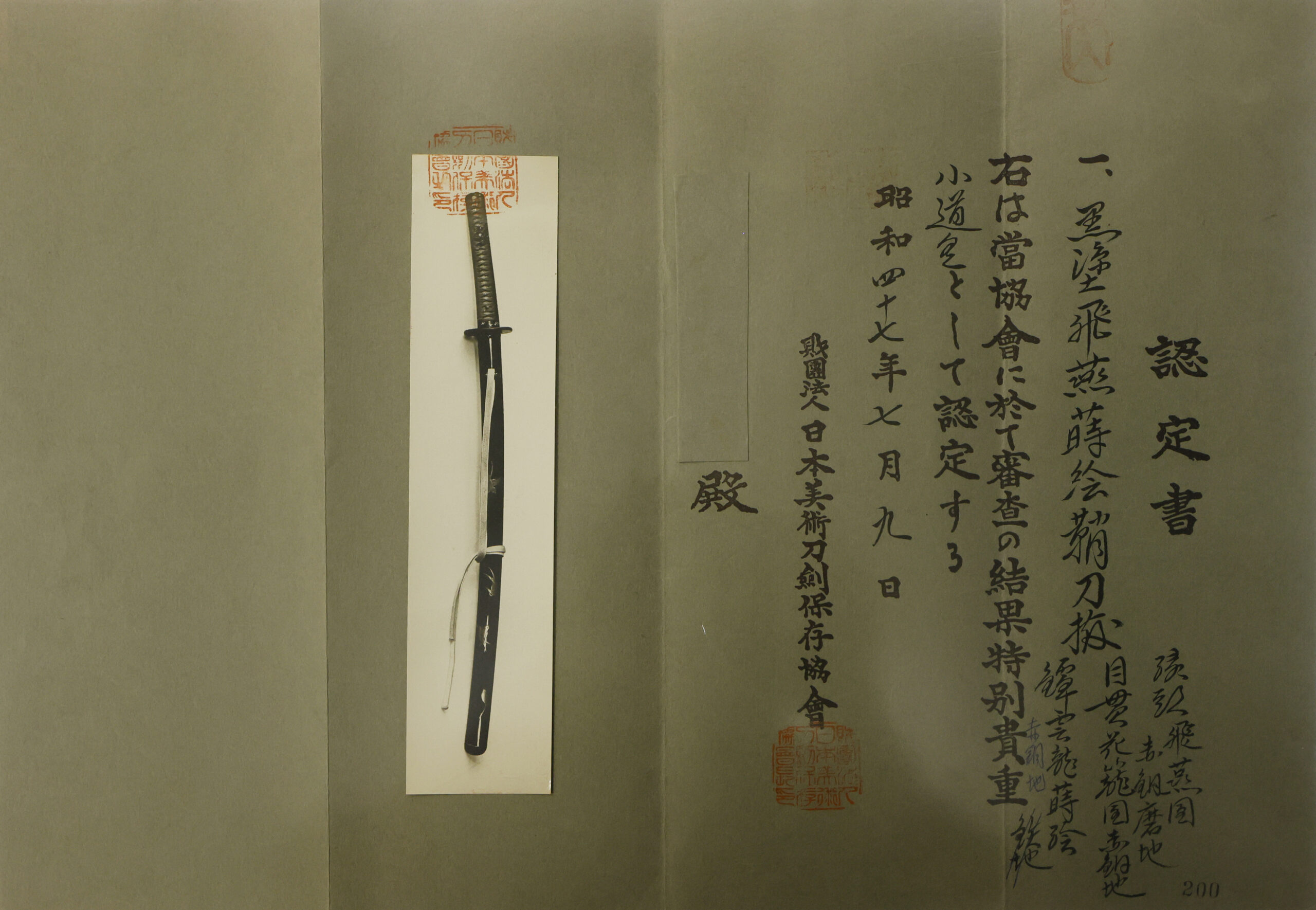
Registration Number : Tokyo 166990
The Board of Education in Tokyo issued a registration paper for this sword. It is called Jyu Token Rui Torokusho (銃刀剣類登録証). Bunkacho (The Agency for Cultural Affairs) acknowledges a Japanese sword with this paper as a work of art. The sword needs to be traditionally hand-forged and made of Tamahagane carbon steel to be registered in the system. With this paper, its owner in Japan can legally own an authentic Japanese sword. Based on this registration number, we will apply for its export permit.
This paper will need to be returned to the board of education when the sword is being shipped abroad, but you can receive a copy of it. An English translation of this registration paper is available on request.
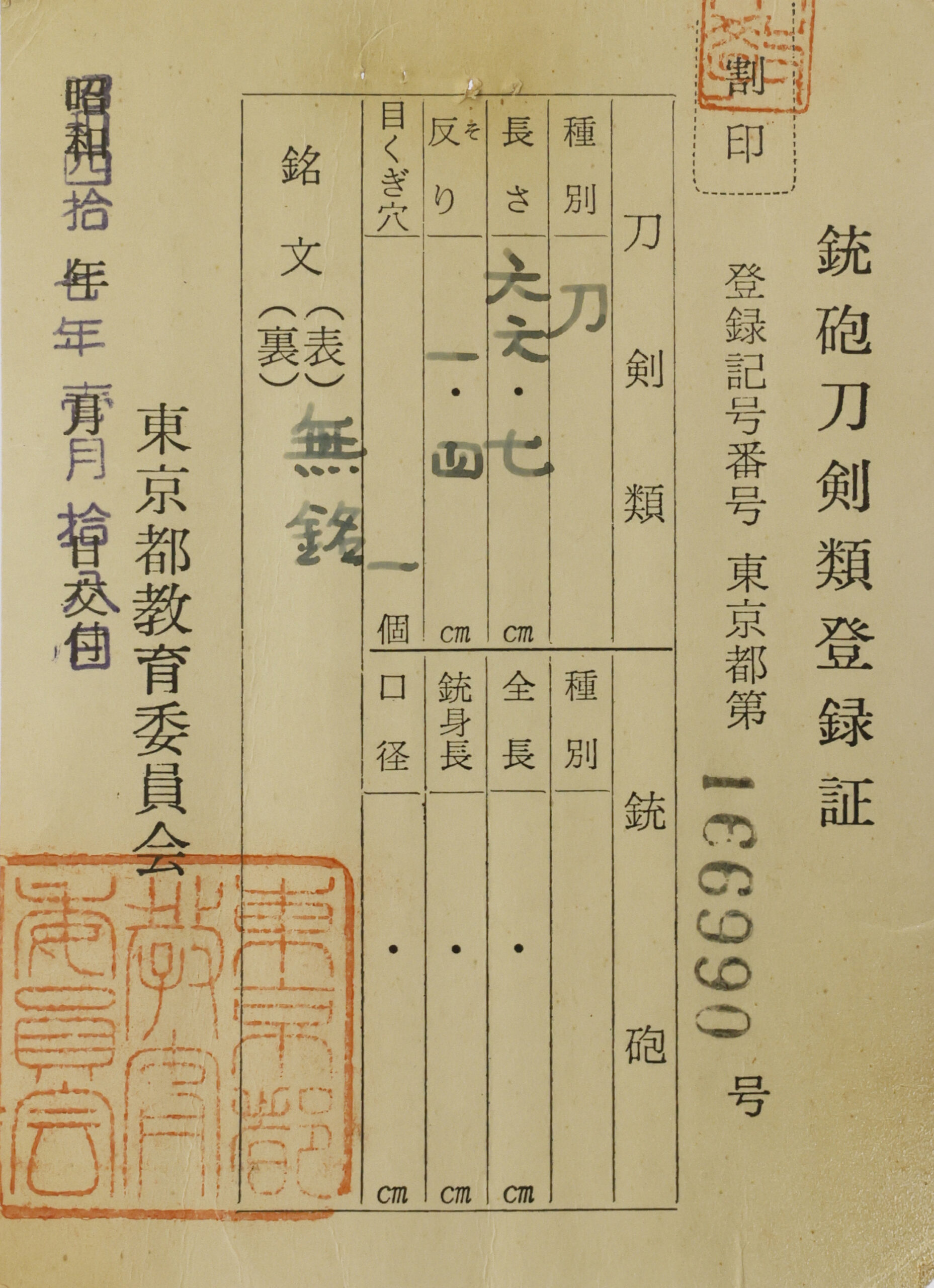
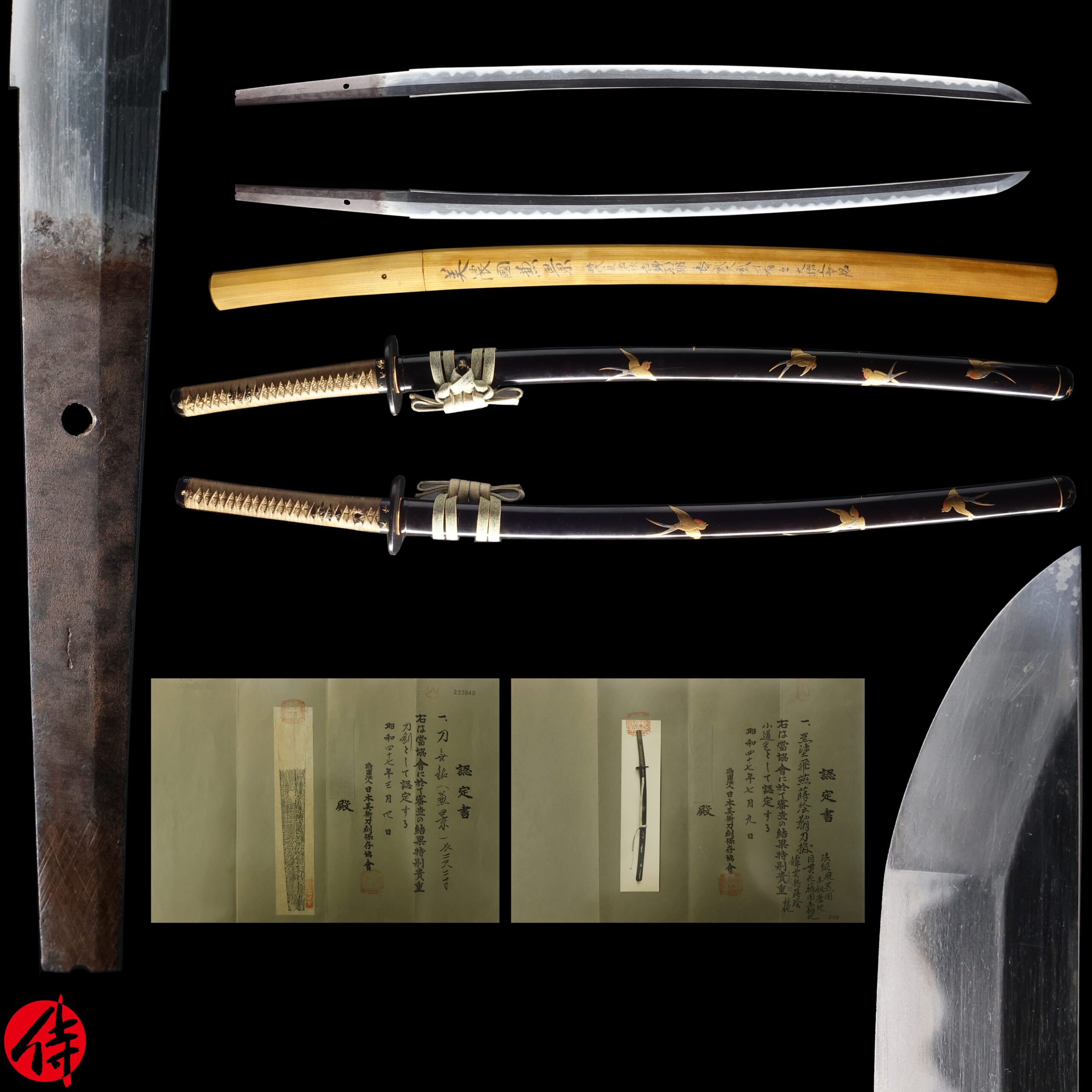
—————————————————————–
【About us】
Samurai Museum is located in Tokyo, Japan, exhibiting antique artifacts related to the Samurai history. Samurai Museum Shop is the place for those who are interested in Japanese culture and craftsmanship. We deal with antique Samurai swords/armor, traditional crafts made in Japan and so on.
【Japanese Sword& Export Process】
The Japanese swords we deal with are hand-forged edged swords made in Japan. It was made from the traditional carbon steel called TAMAHAGANE(玉鋼). Samurai Museum is familiar with the proper legal procedure for an antique/ authentic Japanese sword to be exported from Japan. We have sent more than 700 Japanese swords for the past few years (~2024) to amazing owners who appreciate its historical value.
Each Japanese sword is registered under the Agency for Cultural Affairs and the Board of Education in Japan. They issue a registration paper for each Japanese sword for its owner in Japan to legally possess it. The Japanese sword with its registration paper means it was traditionally hand-forged in Japan.
To legally export the sword from Japan to other countries, we will have to apply for its permit to the Agency for Cultural Affairs(Bunkacho) and return the original registration paper to the Board of Education. It normally takes around 2-4 weeks to receive this permit after submitting required documents. And we would like you to expect at least 1-1.5 months for your order to arrive at your given address after you ordered. For more detailed info, please click here.
It is allowed for residents in Japan to own authentic Japanese swords without a special license as long as they come with registration papers. Please feel free to contact us if you are a resident of Japan, whether temporarily or permanently. We will also assist you when you leave Japan and need to obtain the export permit.
【Payment Method】
We accept payment through Stripe (Credit card), PayPal, Apple Pay or ChromePay, all of which are secure payment methods. Also, you don’t need to make an account on Stripe for the checkout. If you prefer other payment method, please contact us. After confirming your payment, we will apply for an export permit. You may either pay in JPY, USD, AUD, CAD,EUR CHF or GBP. The price is set in Japanese Yen. Prices in other currencies are automatically calculated based on the latest exchange rate.

* If the amount is above 1 million JPY, Stripe or wire transfer will be the only options for payment.
【Shipping】
We have shipped authentic Japanese swords to the USA, Canada, Mexico, Germany , Belgium, France, Finland, Hong Kong, Australia. If you don’t live in these countries and like to order, please contact us first before making a purchase. We offer Free International Shipping as long as we can send antique Japanese swords by EMS.
We normally ship by EMS(Express Mail Service) provided by Japan Post. We will send you a tracking number for your order as soon as we hand it to the post office. We will put 100 % insurance on the shipping document without any extra charge. Based on the total amount, there might be a duty tax or other fee for you to pay, depending on the countries. We use package cushioning to protect the item and put it in a PVC pipe, which is one of the most secure packages because of its durability.
It will normally takes 5-14 days for the item to arrive at your given address after we dispatch it. Time of delivery is estimated as accurately as possible by the carrier but does not take into account any delays beyond our control such as by inclement weather, post office holiday seasons.
* If you live in Australia and like to purchase an authentic Japanese sword, please click here to know the detail.
* If you live in the UK and like to purchase an authentic Japanese sword, please contact us first and click here to know the detail.

【Review】
Here is one of the reviews we received from a customer who purchased an authentic Japanese sword from us. For more reviews, please click here.
“My experience overall with the whole process was wonderful. I had many questions about the history and process to purchase these treasures. All my questions were answered very timely and complete. The staff is very knowledgeable and very well versed if any questions do arise.”
【How to make sure the condition】
Please keep in mind that what you are going to purchase is an antique item. We uploaded high resolution photos for you to check its condition thoroughly. If you like to see more photos with different angles, please feel free to contact us. We will be happy to send them to you so that you can make informed decision. It is essential for us to know that you are happy with your choice of a sword. and we are prepared to use the best of our ability to serve you.
【How To Contact Us】
Please contact us through email, Facebook Messenger or Live Chat if you have any questions. You can find each icon on the right side of the website. Please click one of them to reach us. We will reply to you within 1-2 business days.
【The Art of Nihonto (Japanese Sword)】
Samurai’s history is a profound, eloquent legacy of ancient Japanese warriors in which millions of people worldwide are being fascinated. If you like to find out the art of Nihonto, please click here.
【A Guide to Japanese Sword Maintenance】
After acquiring an genuine Japanese sword, it is also important to know how to take good care of it. Here is the special video for you. Mr. Paul Martin, Japanese sword expert, shows you how to give proper maintenance to your sword. By mastering how to clean the Japanese sword, its aesthetic beauty will last forever.
When you purchase a Japanese sword from us, you can get a Free Japanese sword maintenance kit. It comes with four tools(Choji Oil, Uchiko Whetstone Powder, Peg remover, Oil Applicator). By watching the video instruction above , you can enjoy learning how to maintain your Japanese sword while appreciating it. If you have any difficulty assembling the sword or cleaning the blade, you can feel free to contact us.
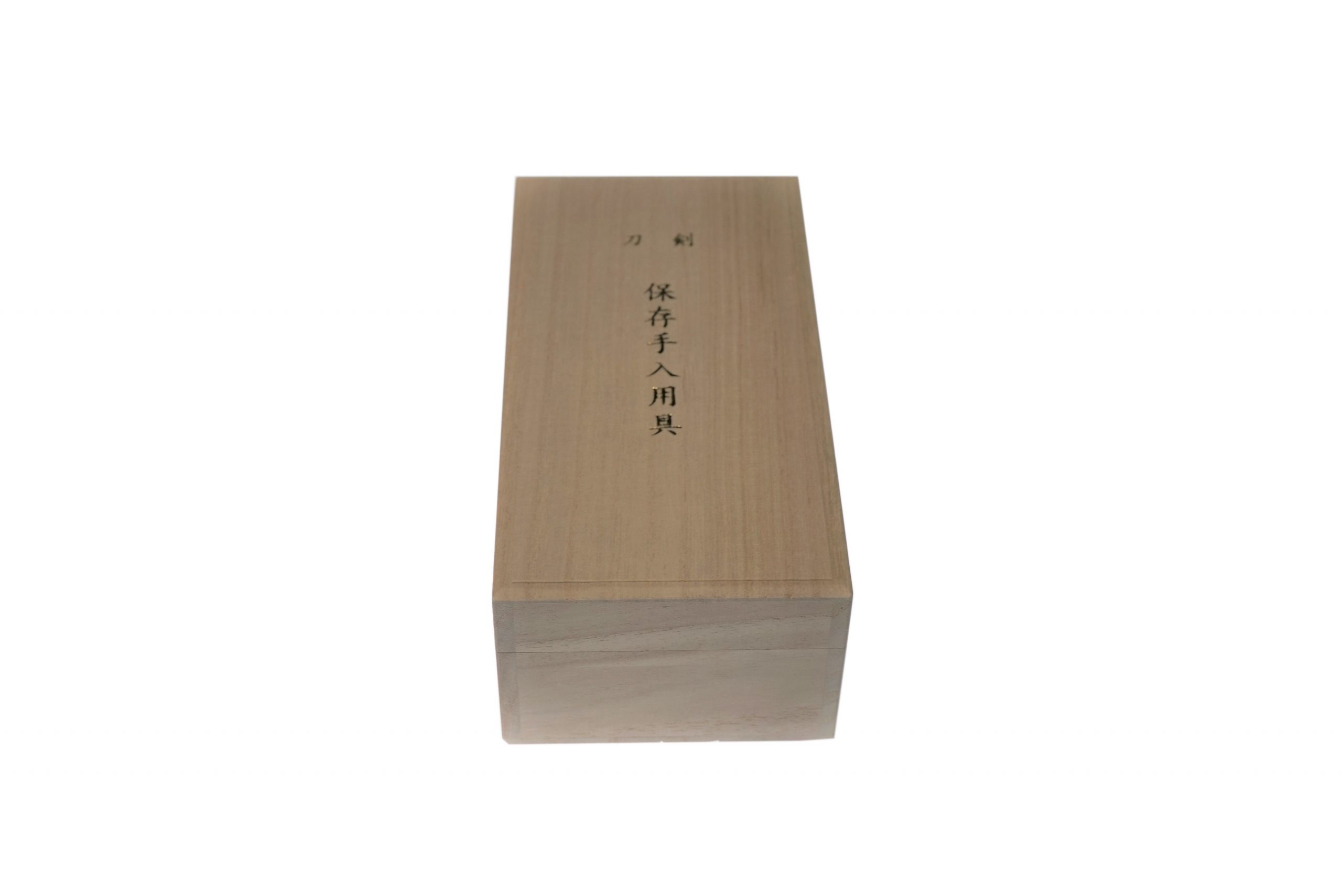
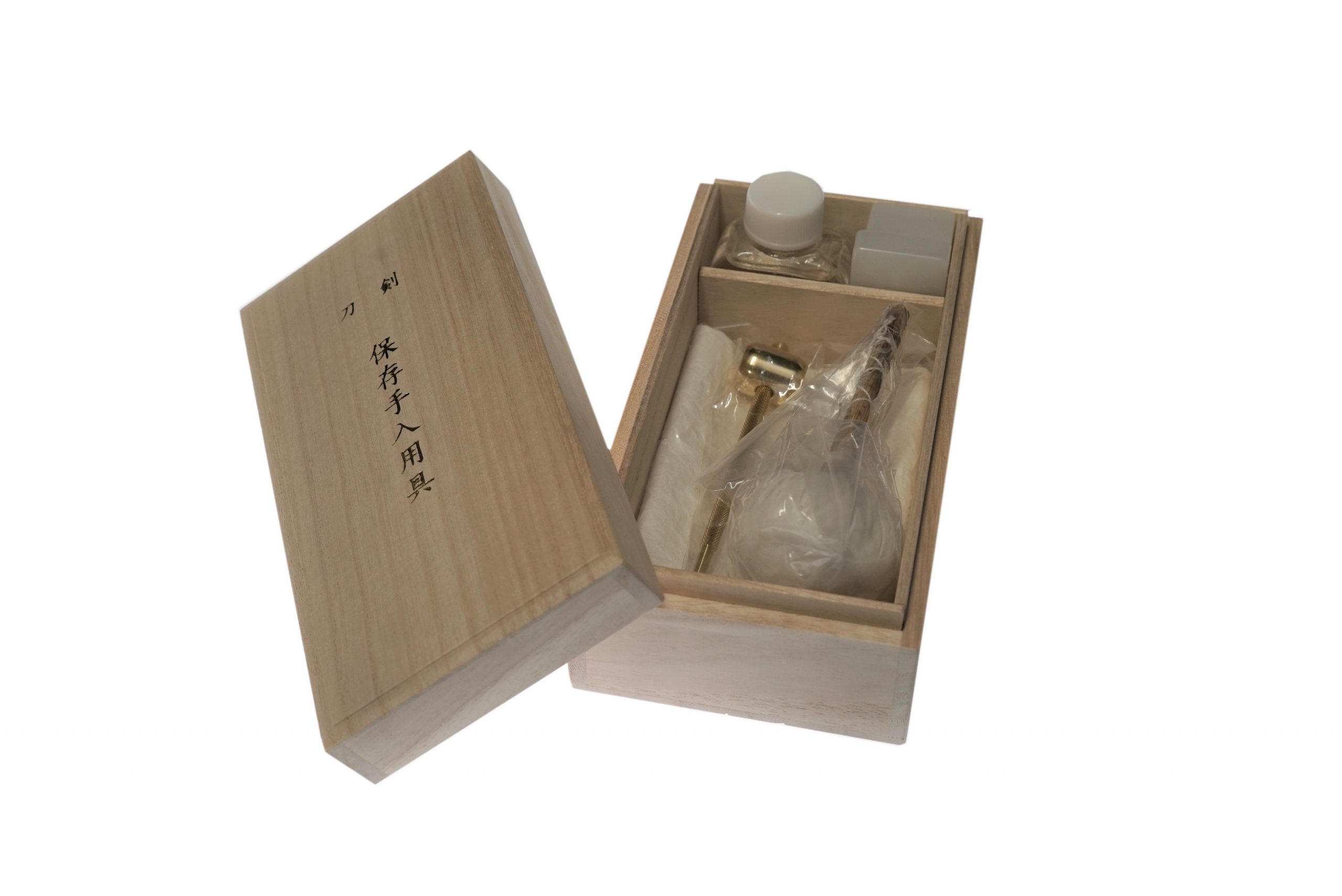
MORE ANTIQUE JAPANESE SWORD FOR SALE
SWORDS WITHOUT CERTIFICATES FOR SALE
LEARN JAPANESE SWORD TERMINOLOGY
Thank you for reading all the information on the page. If you have any difficulty choosing the right Japanese sword for you, we will be more than happy to help you find the one that speaks to you the most. Please feel free to contact us.
